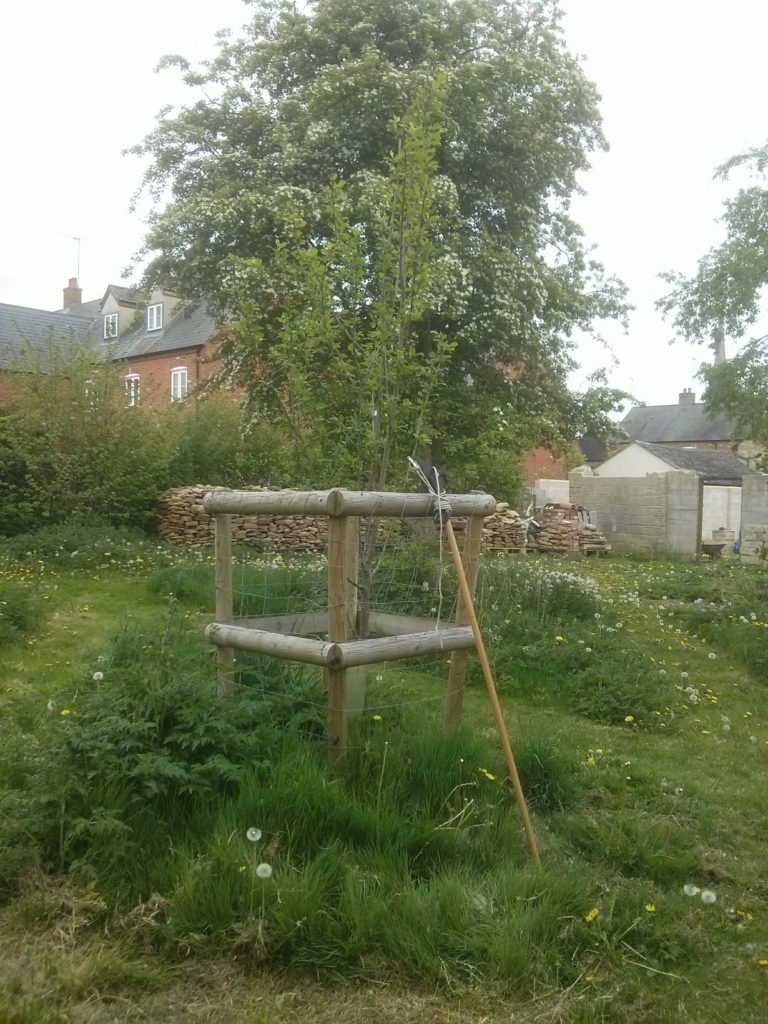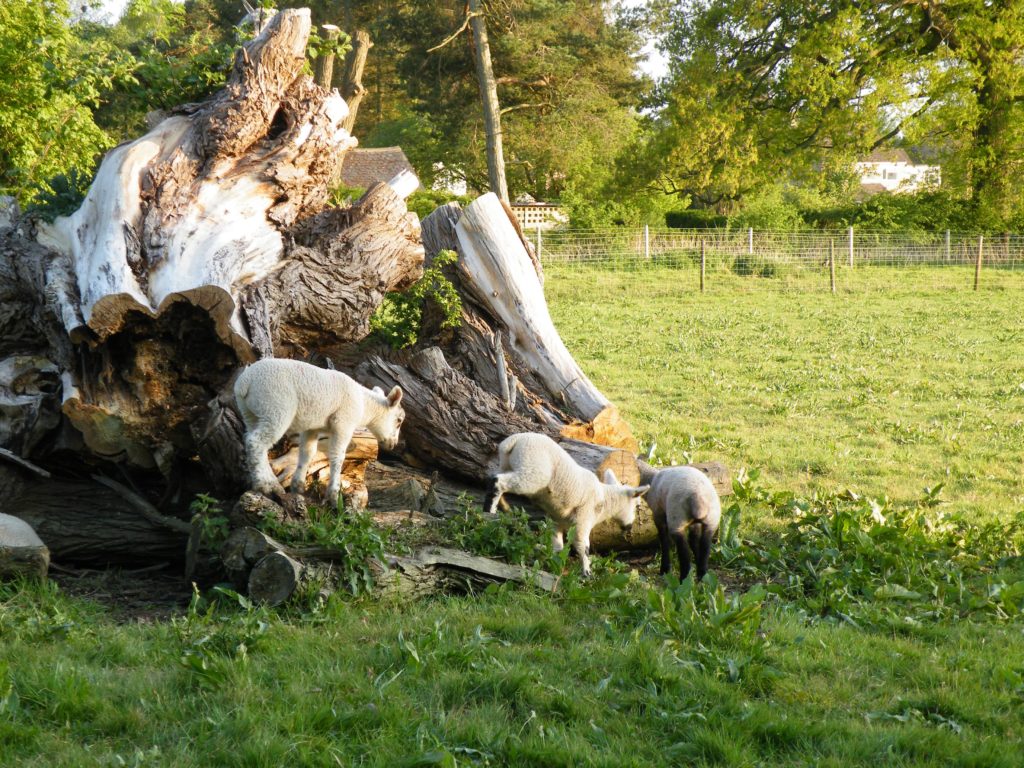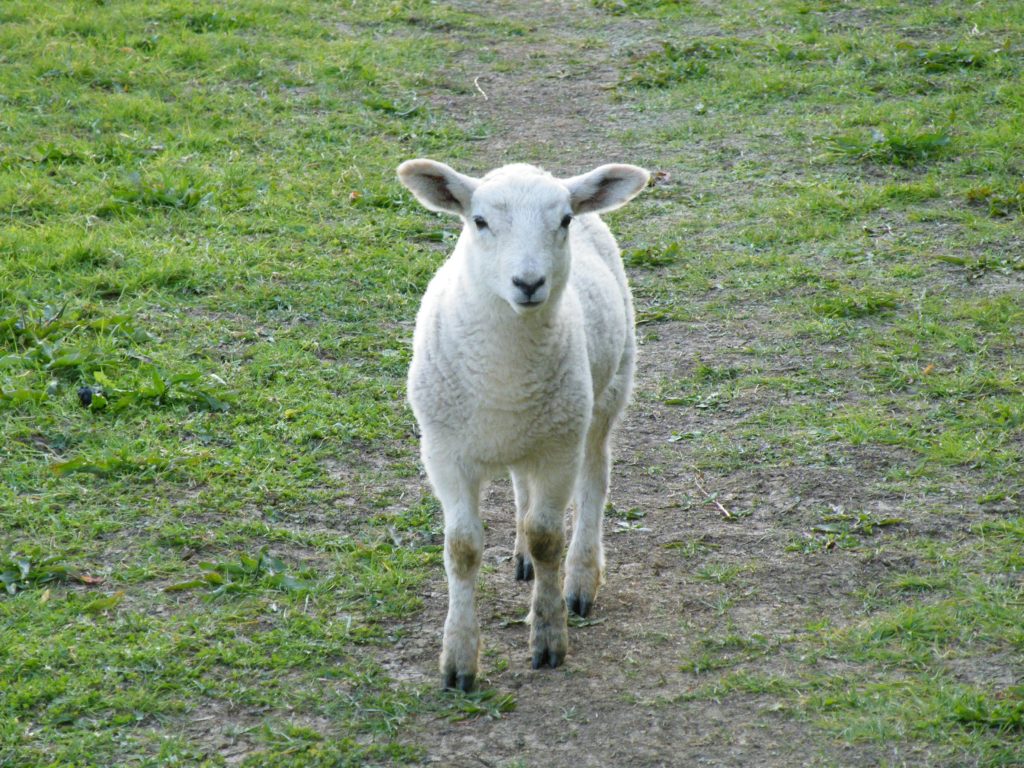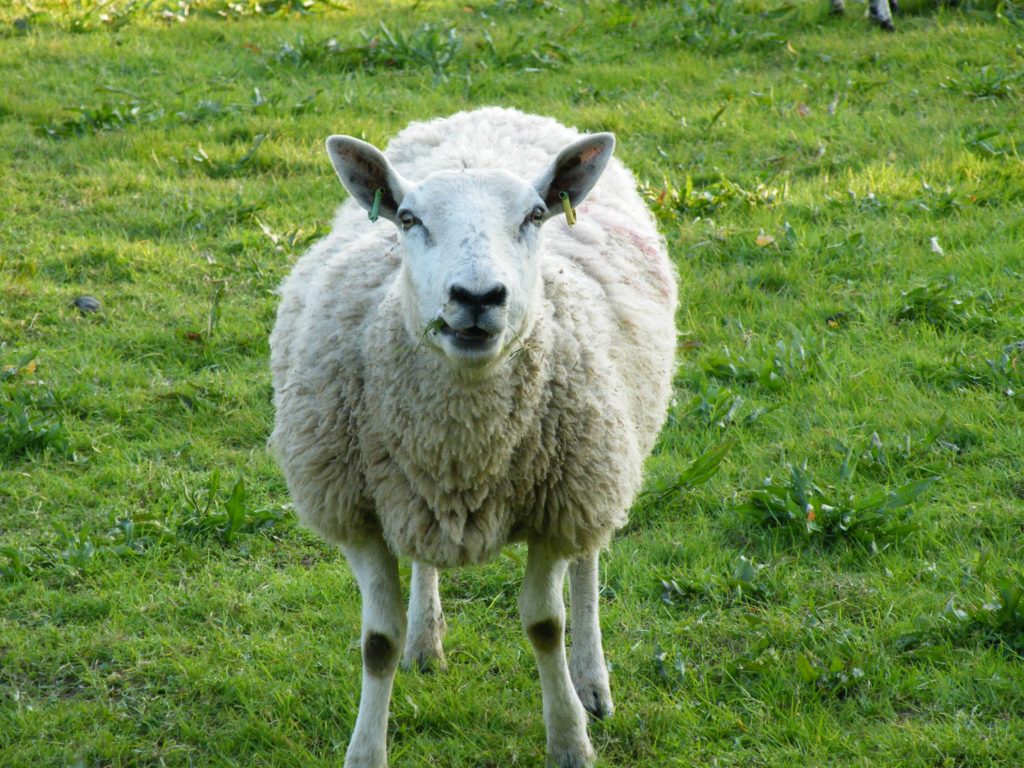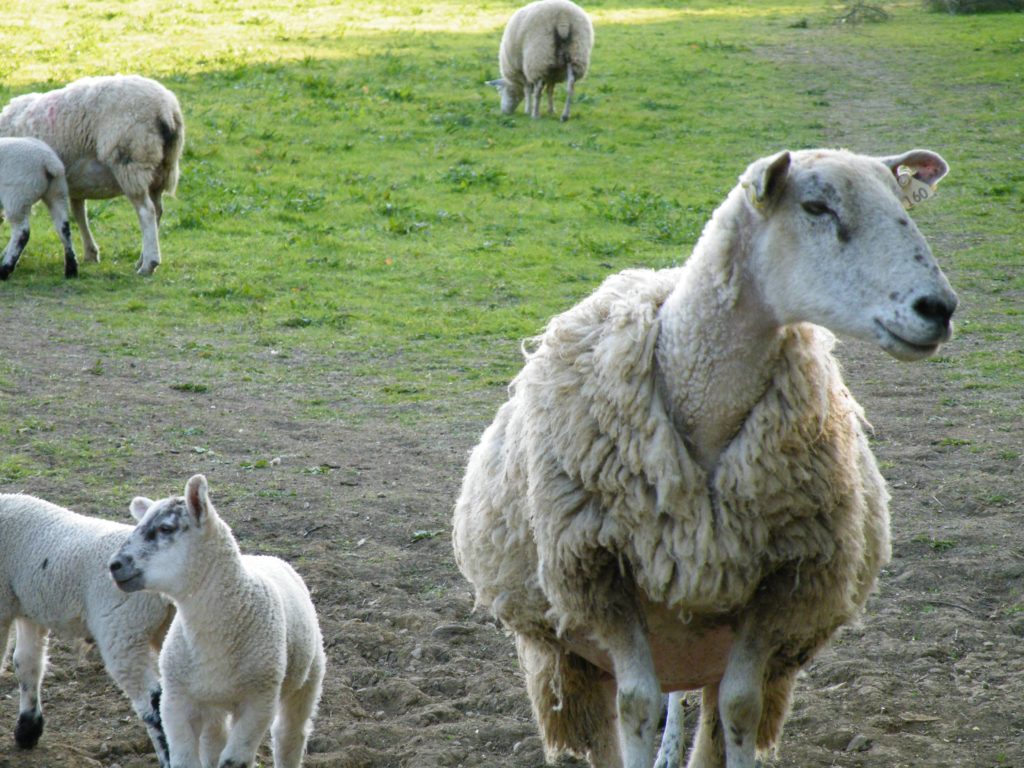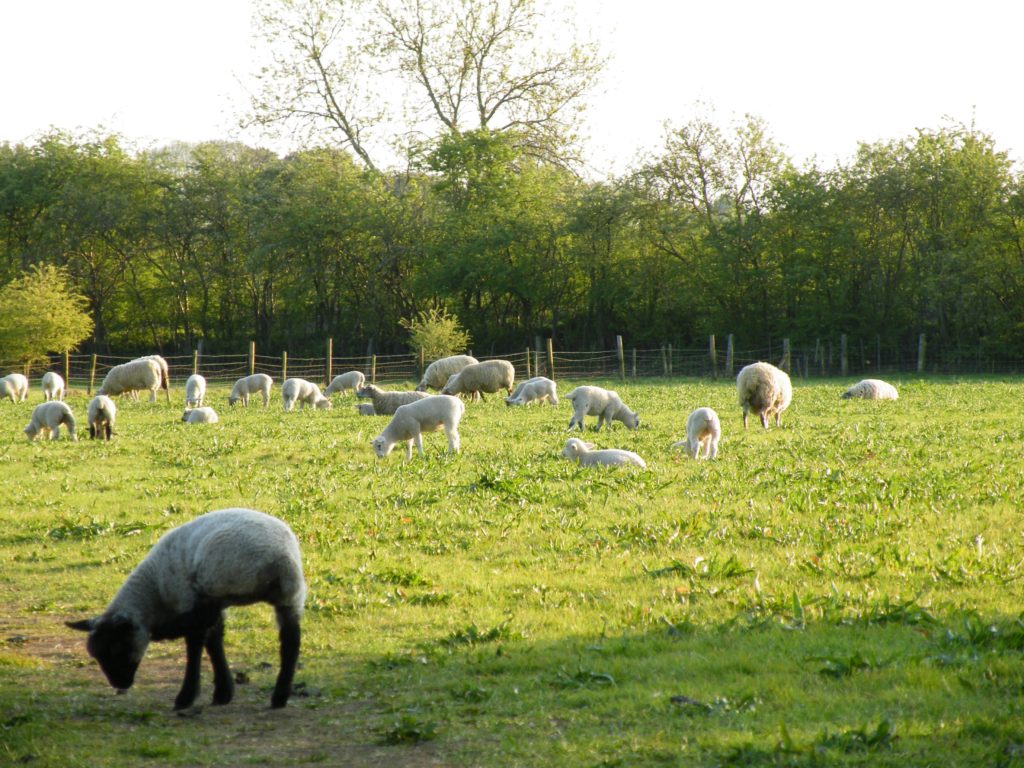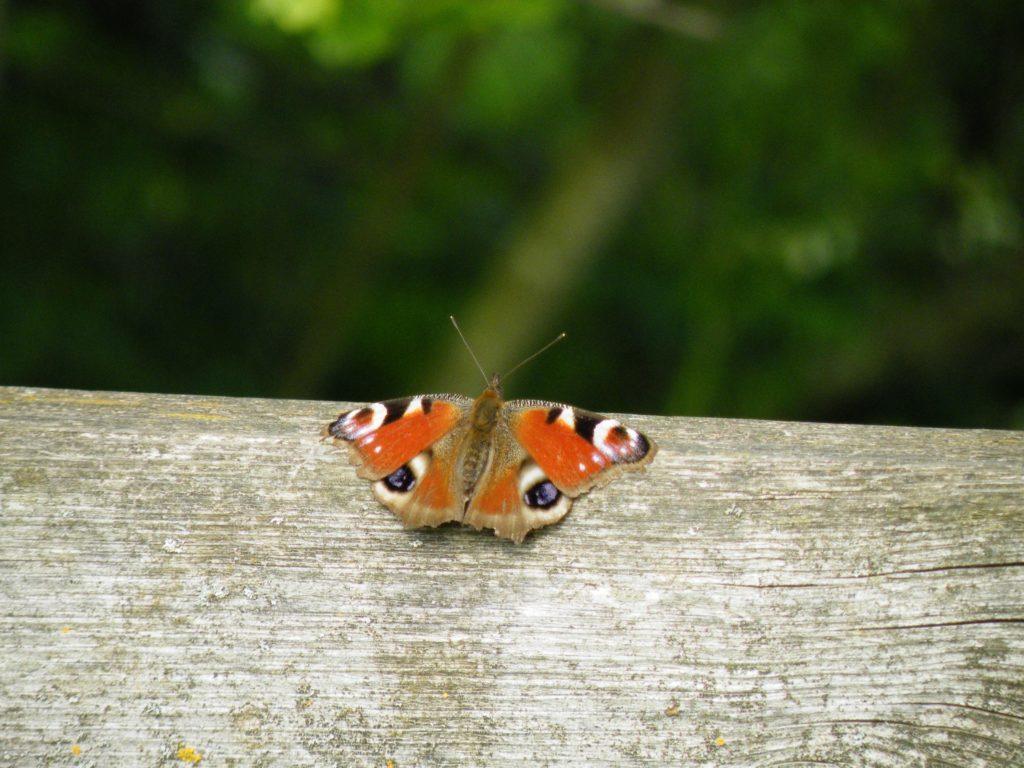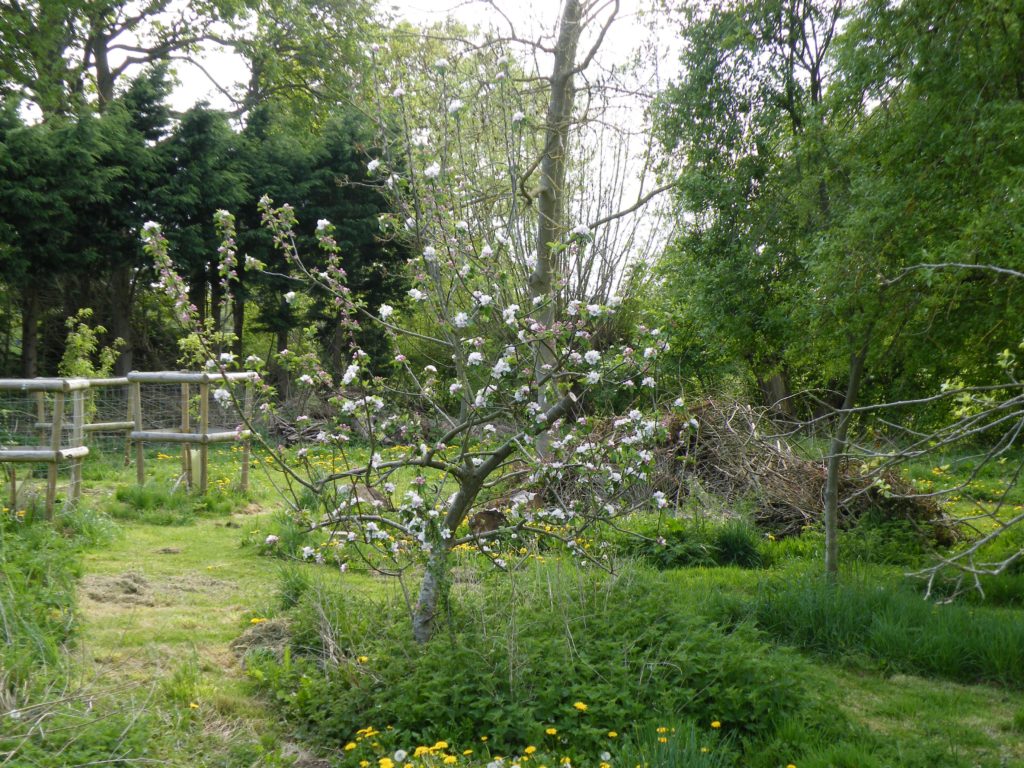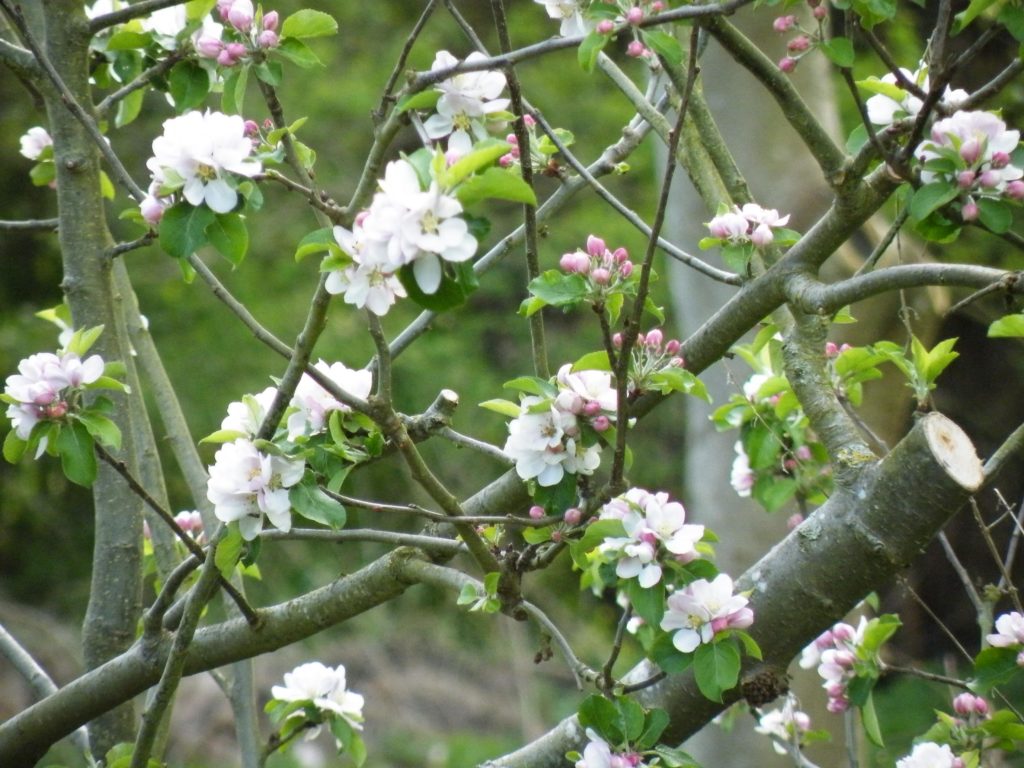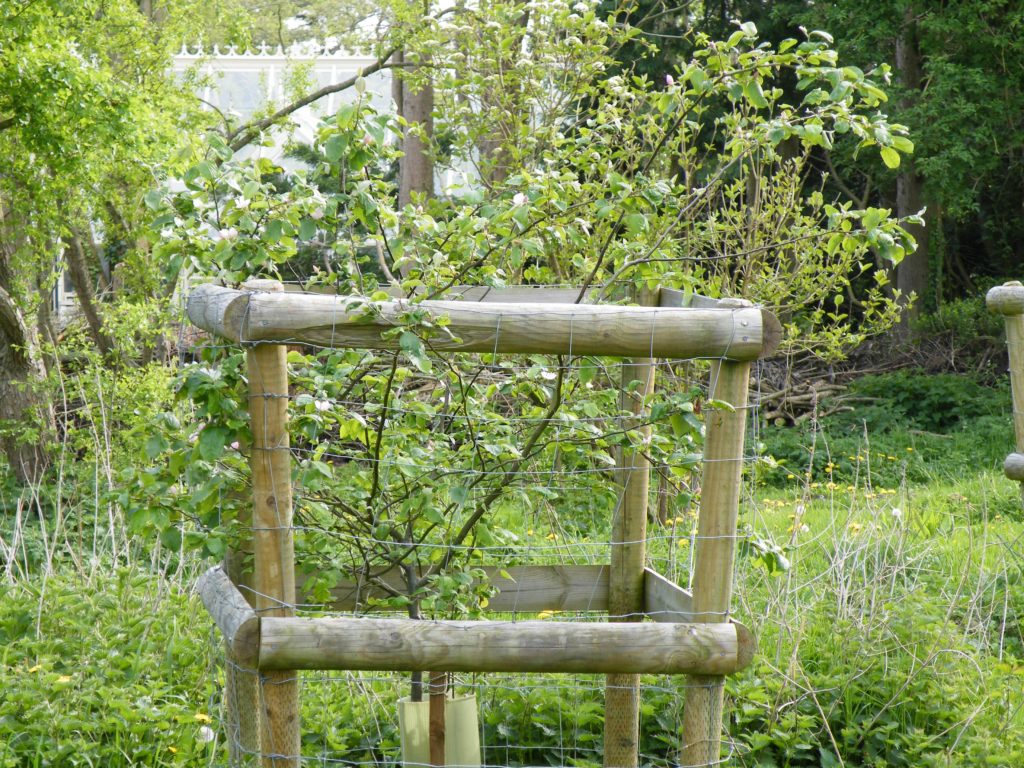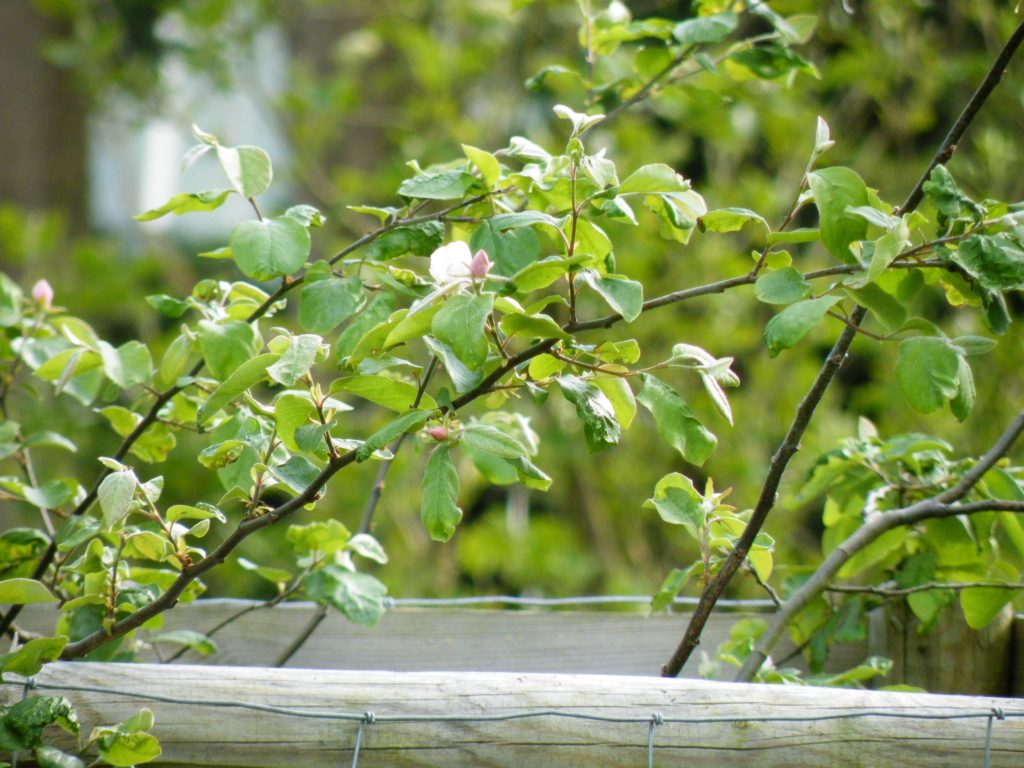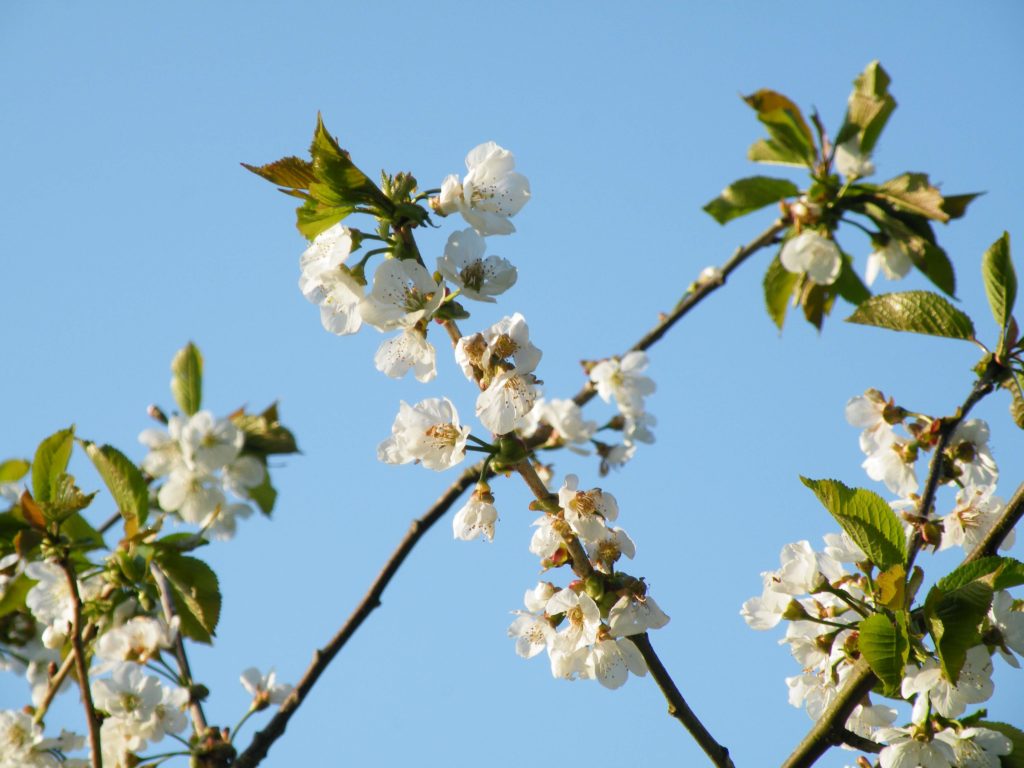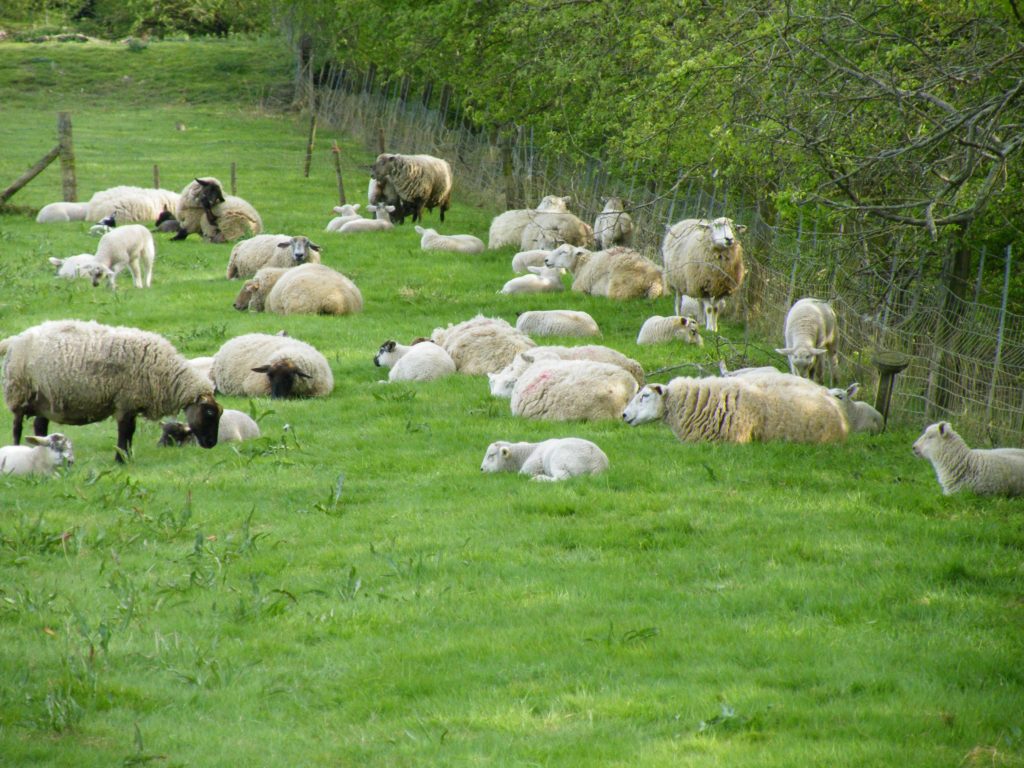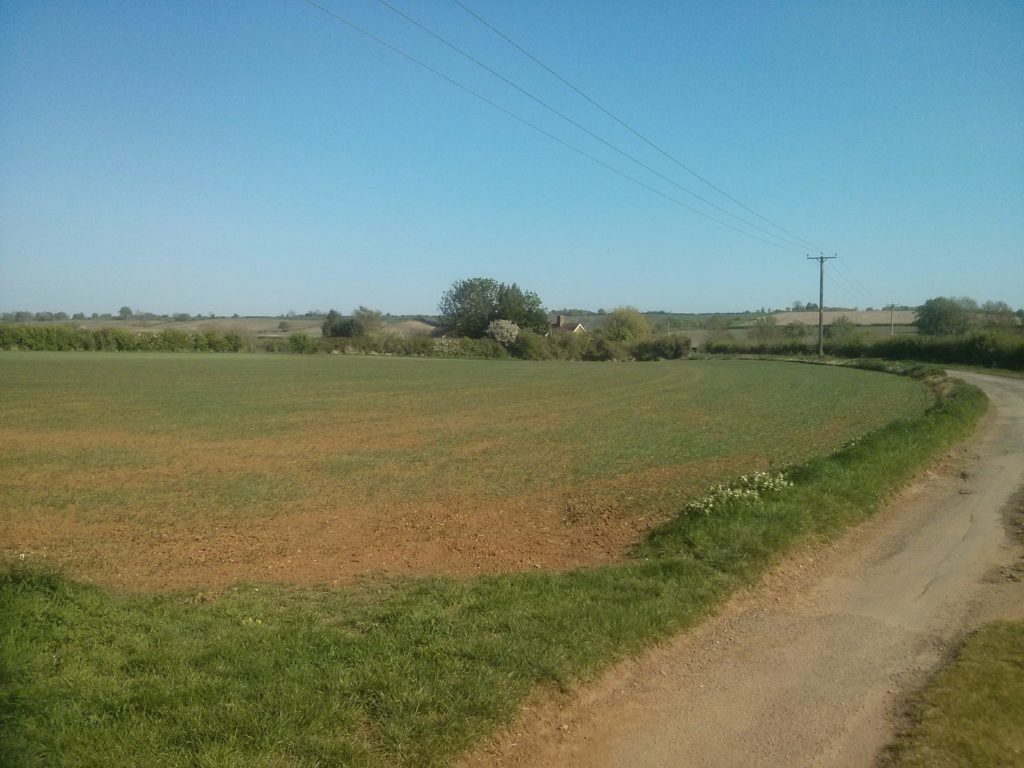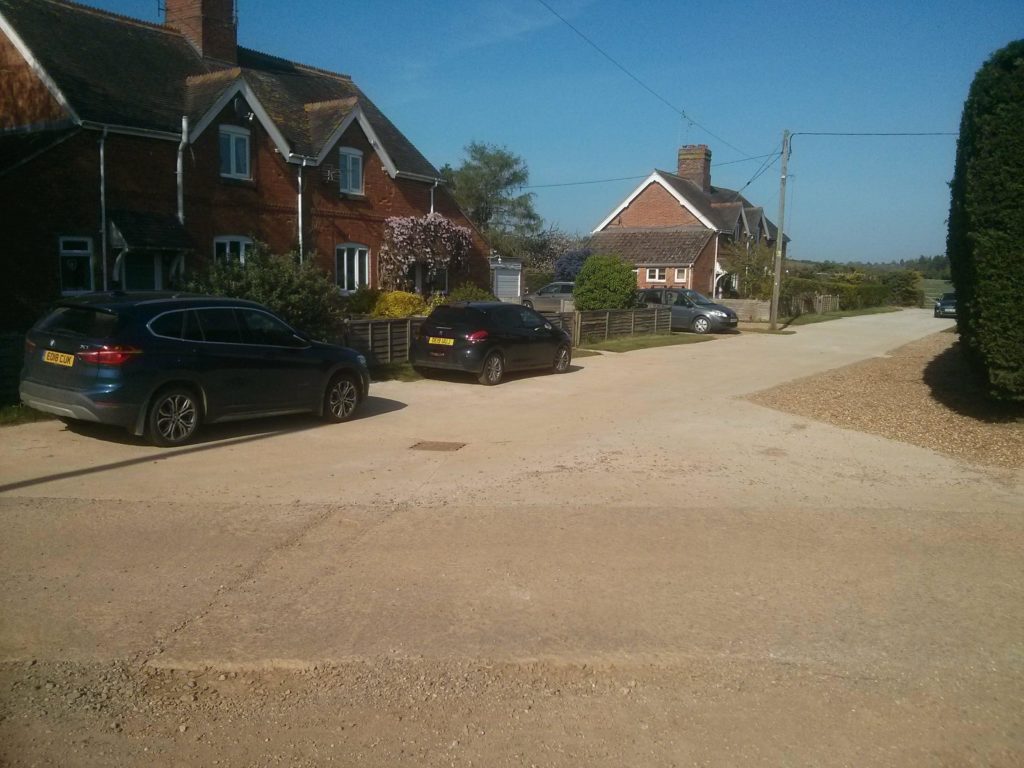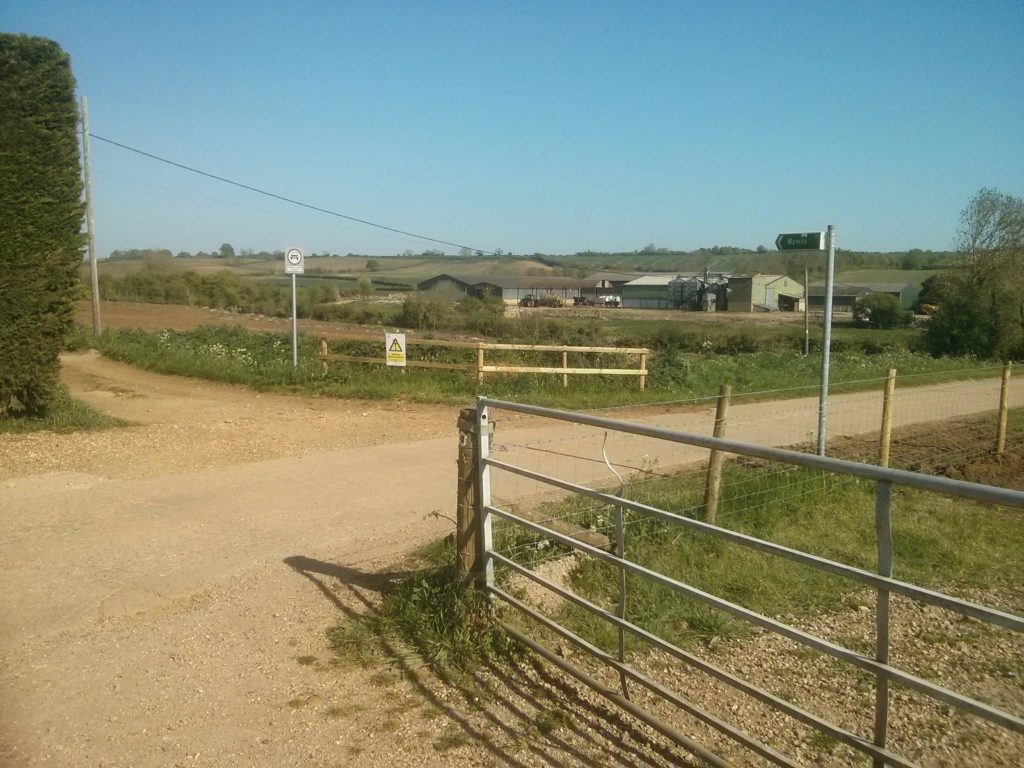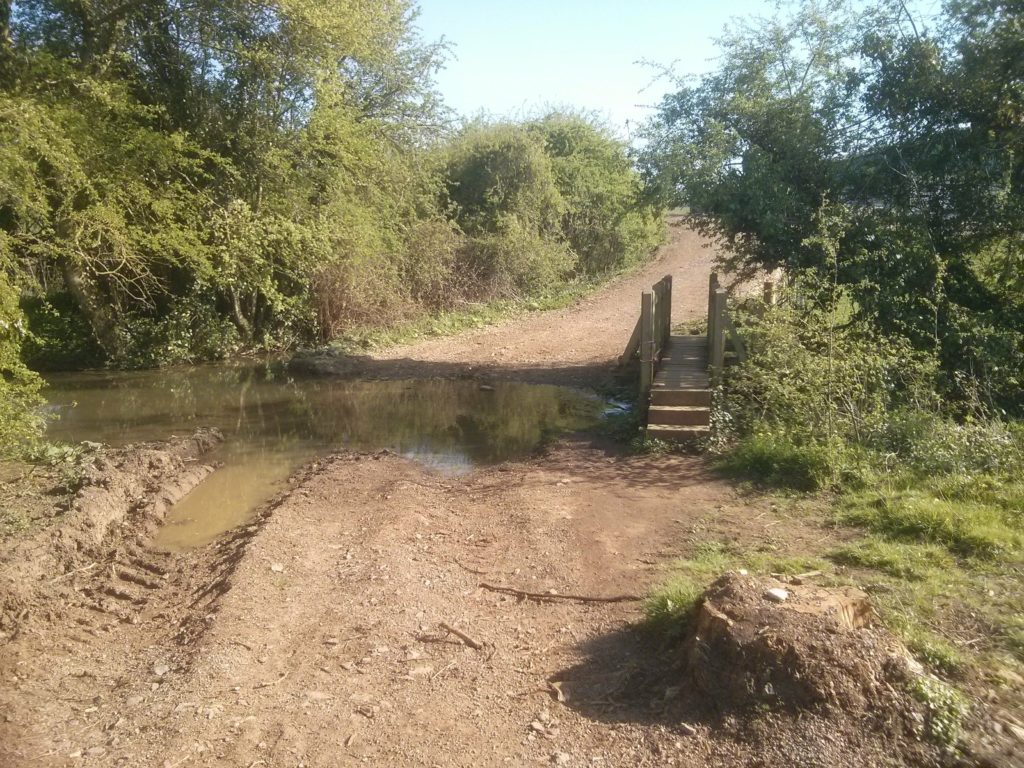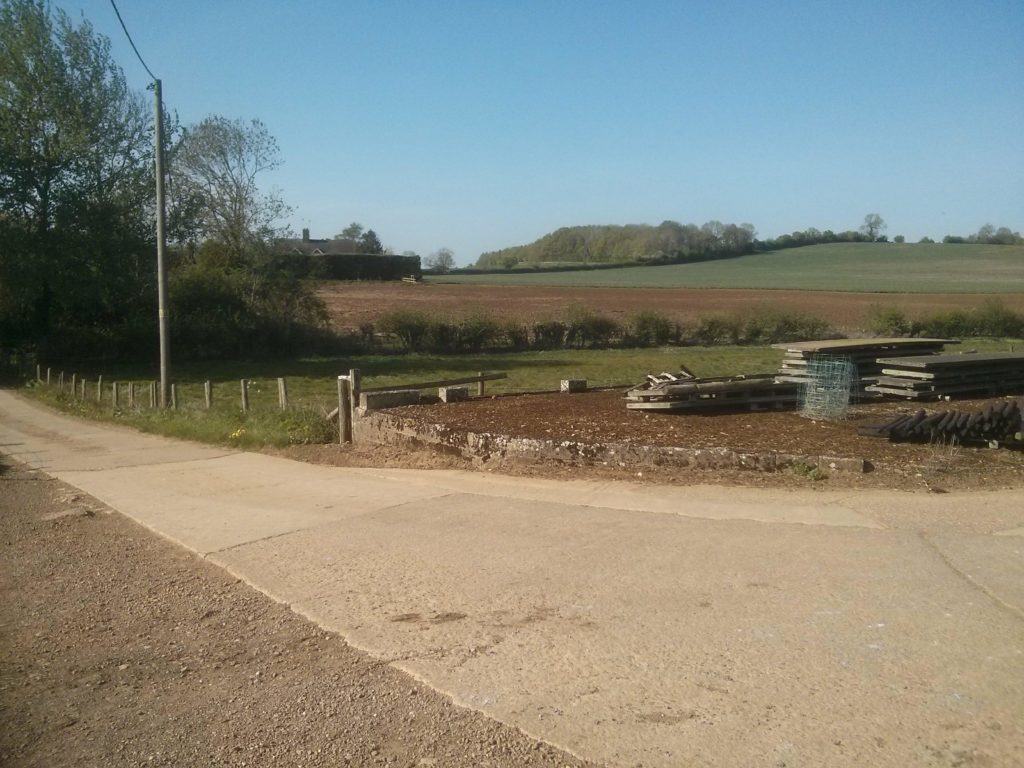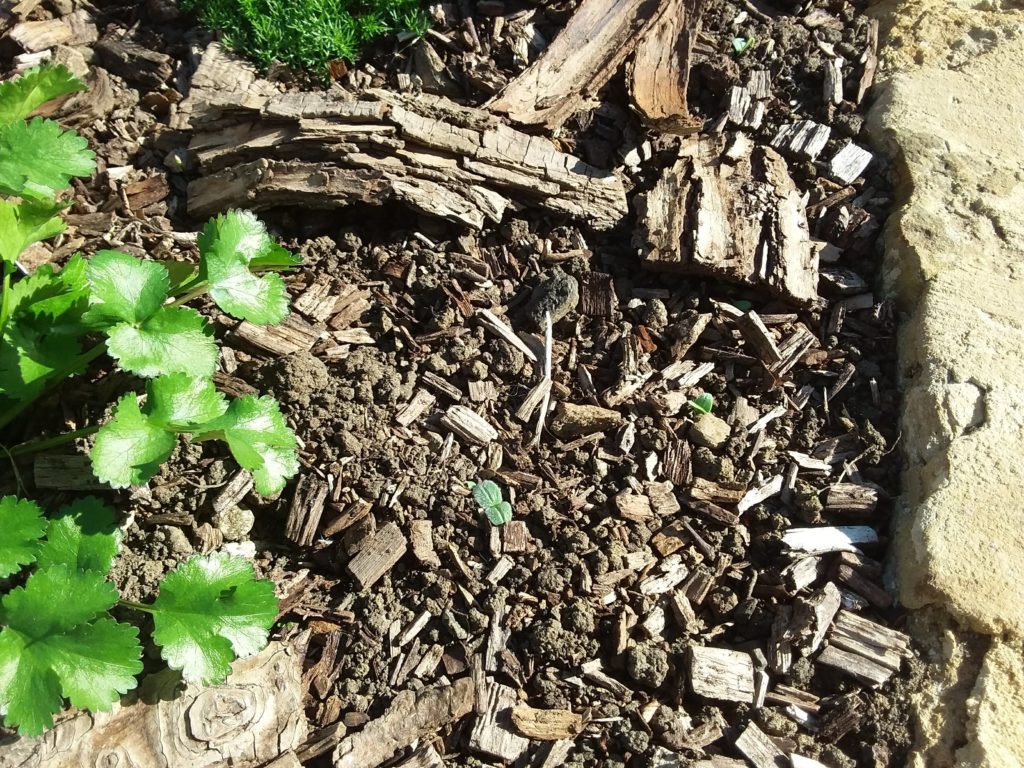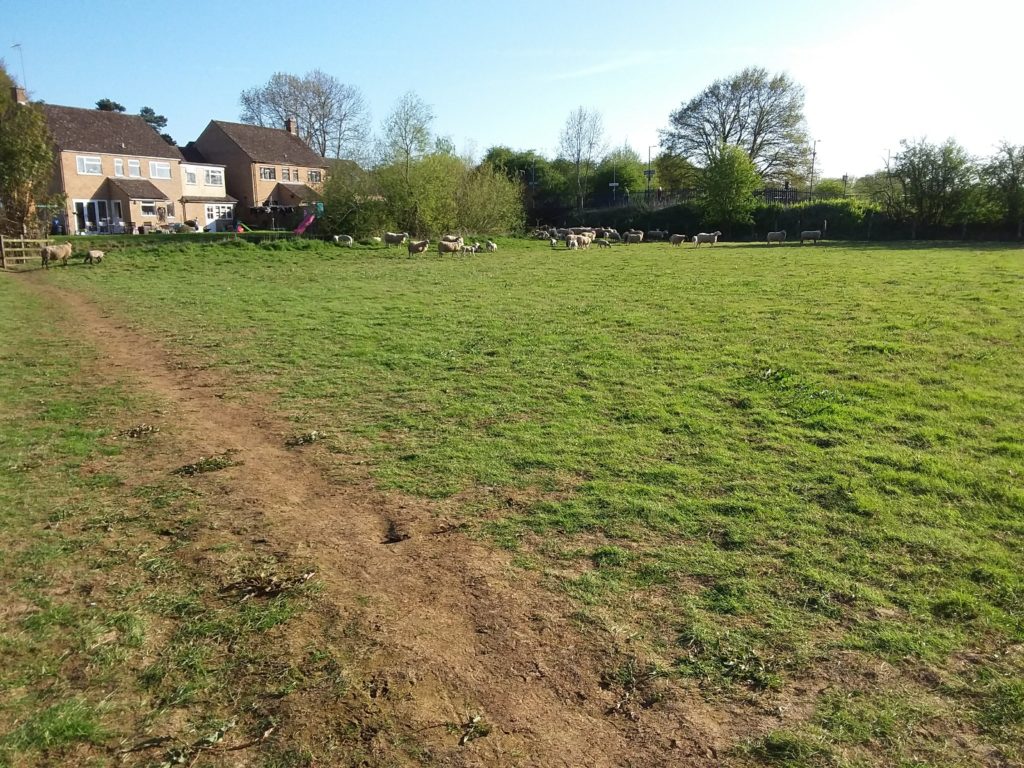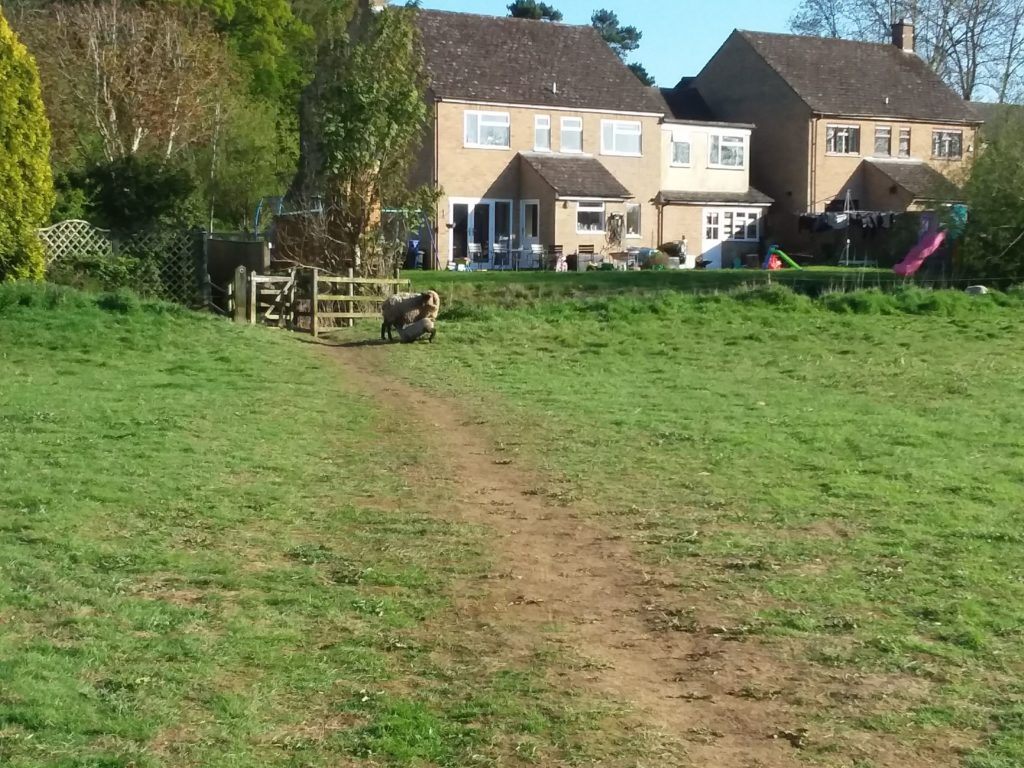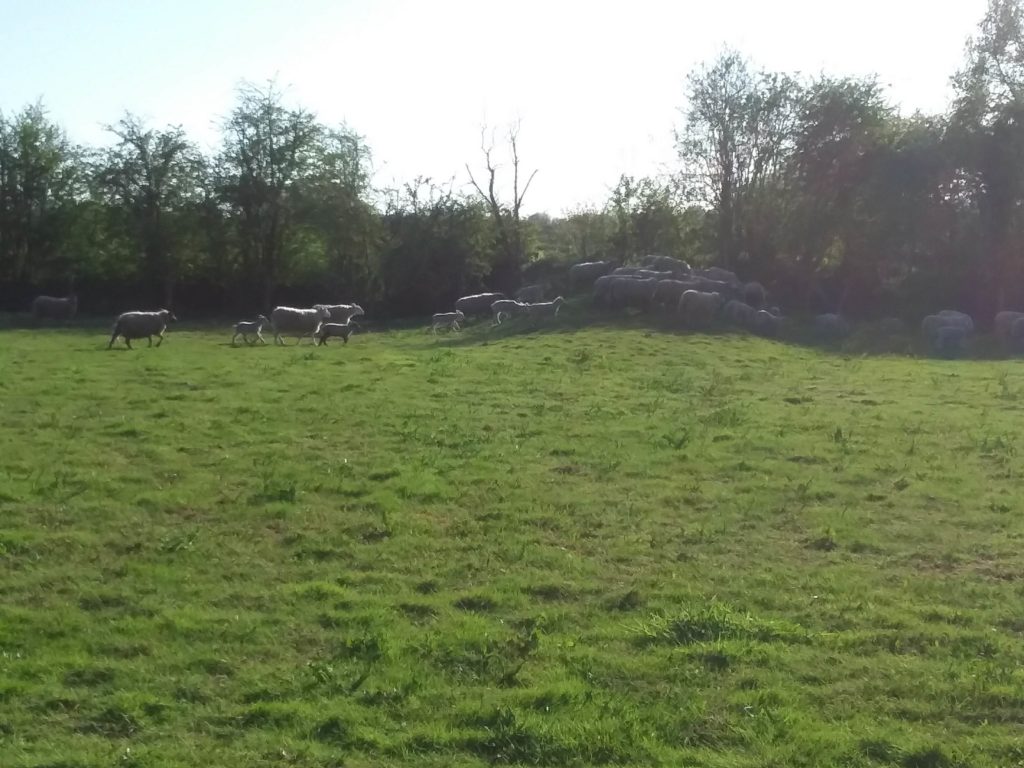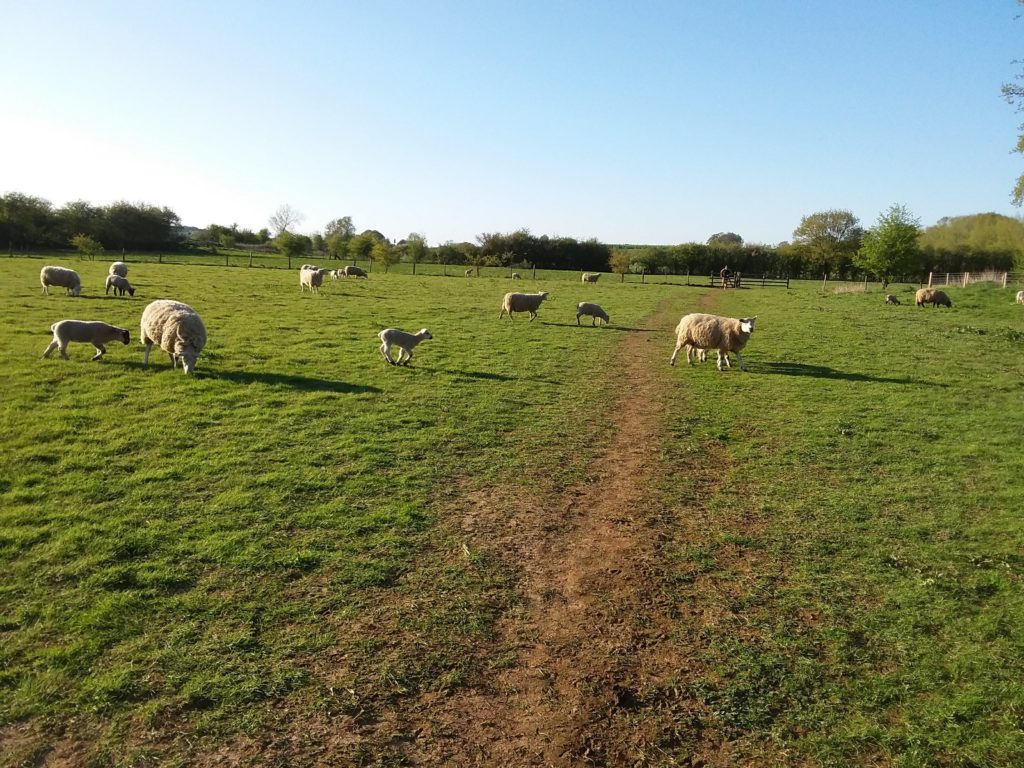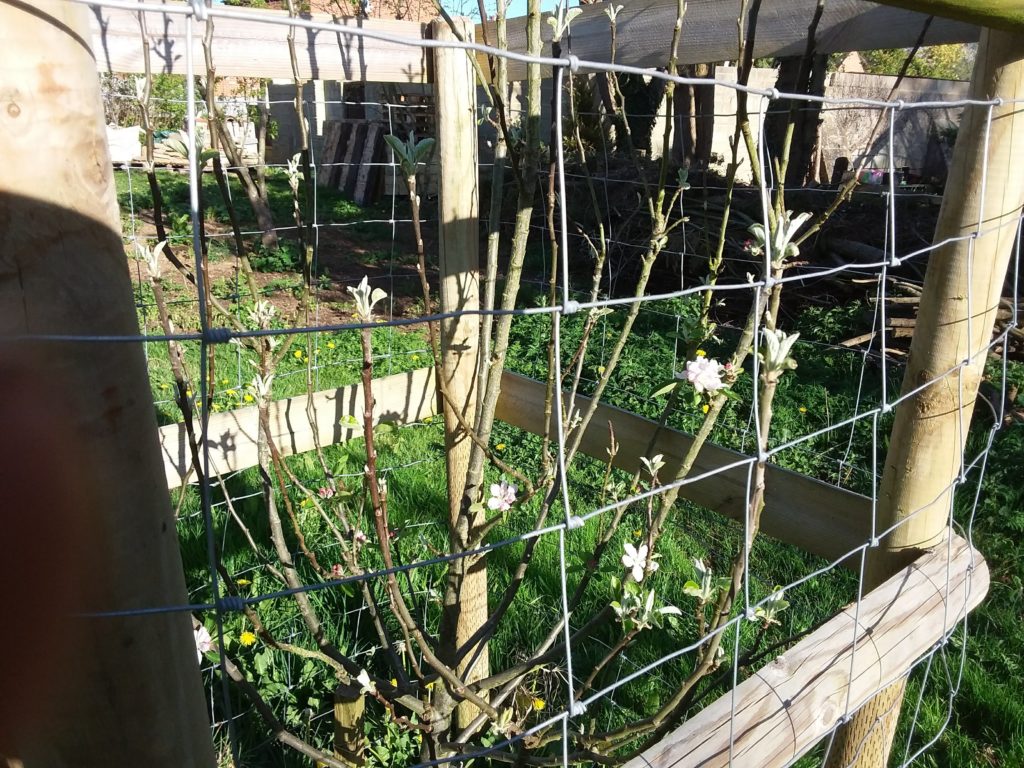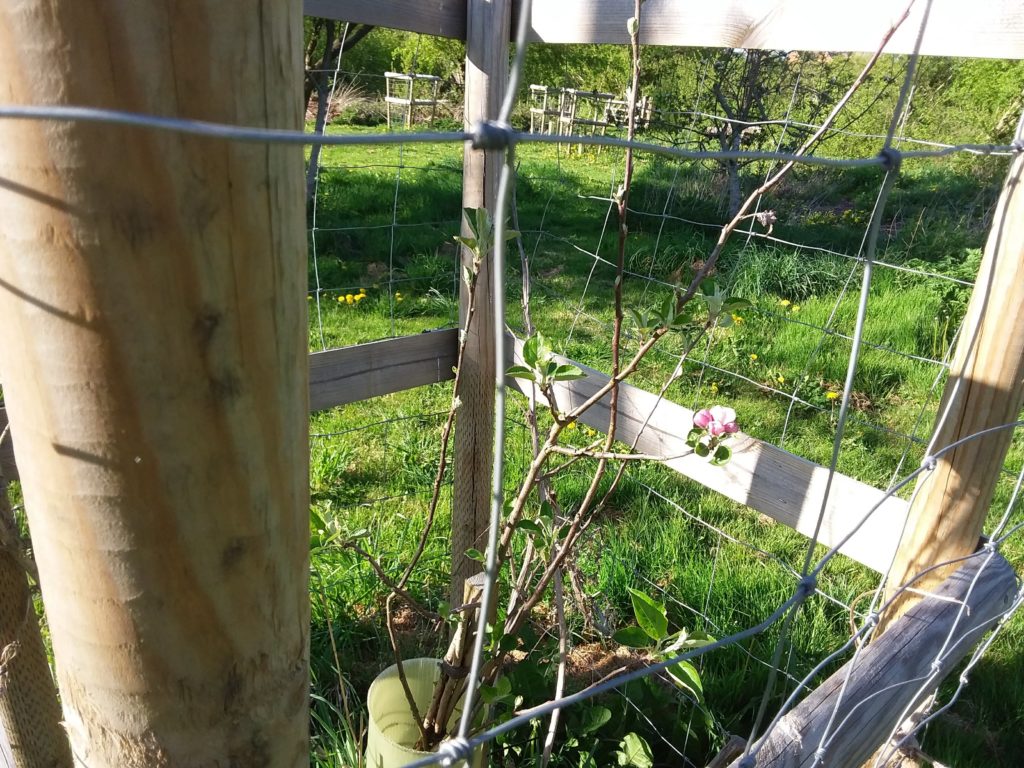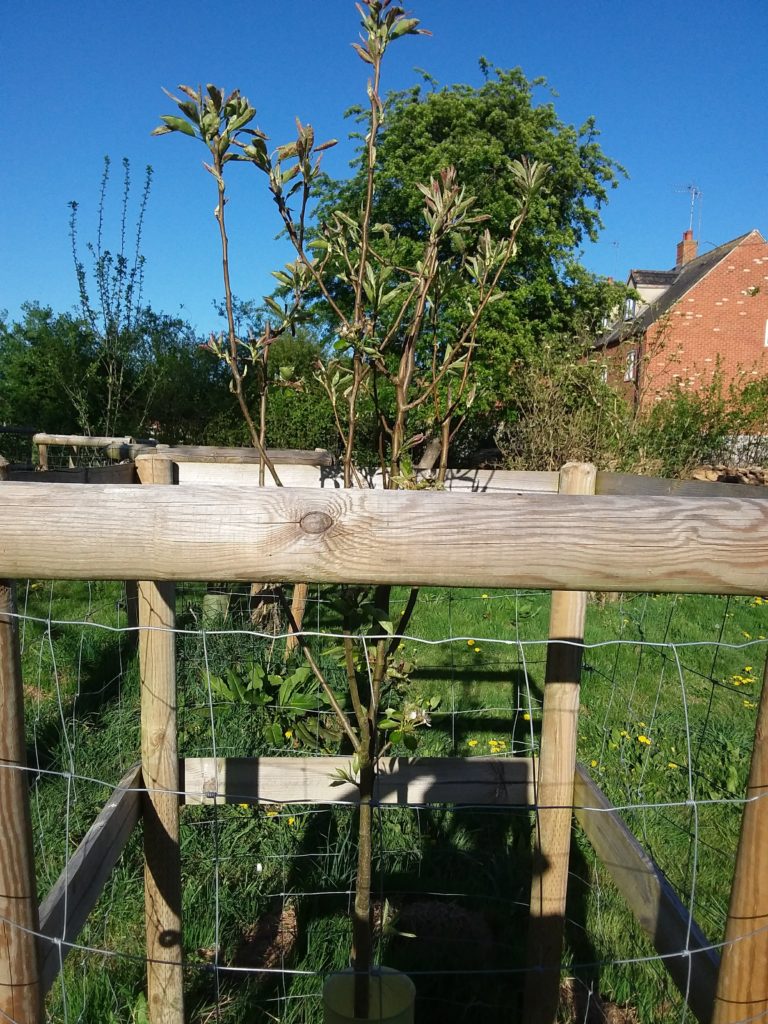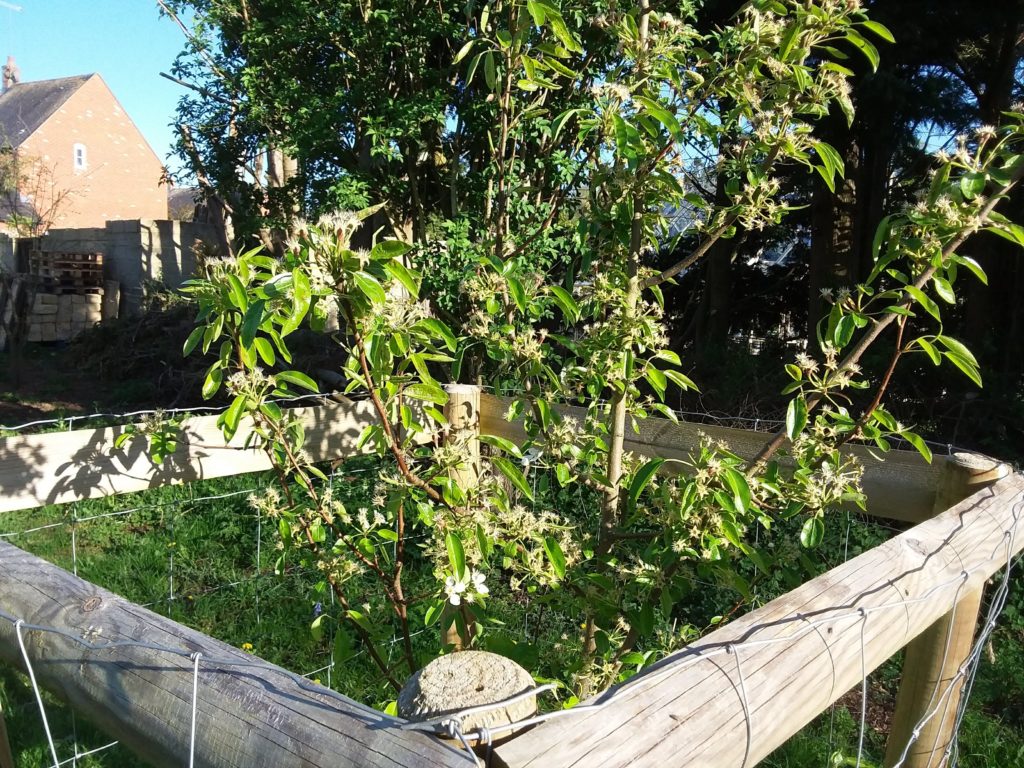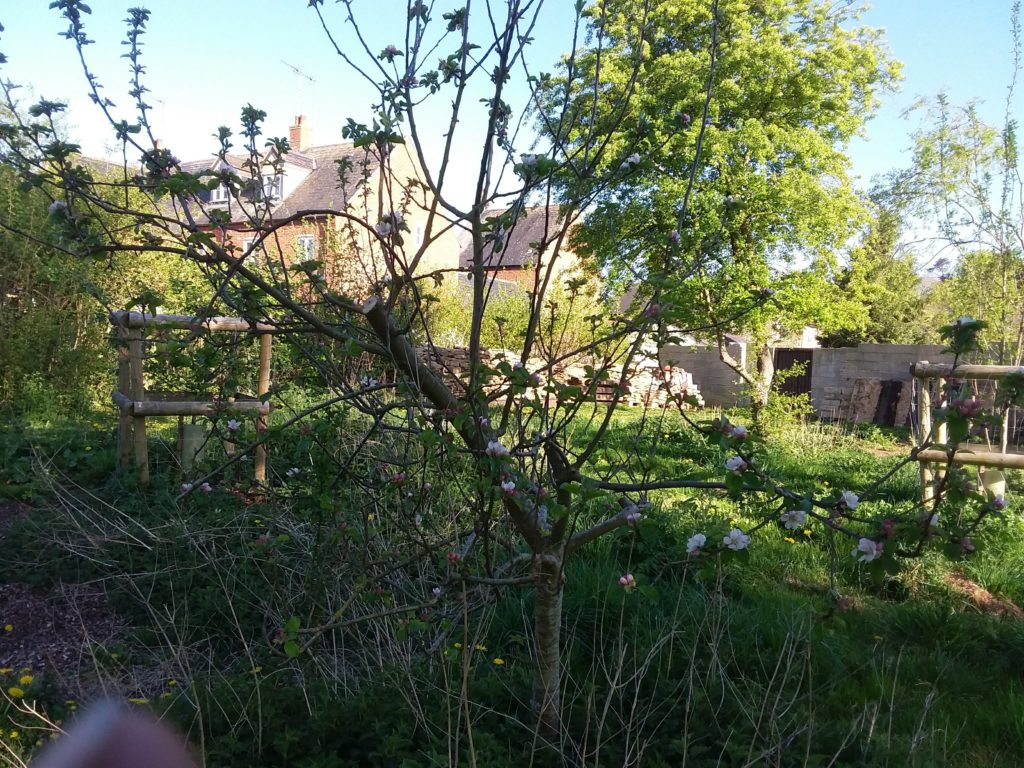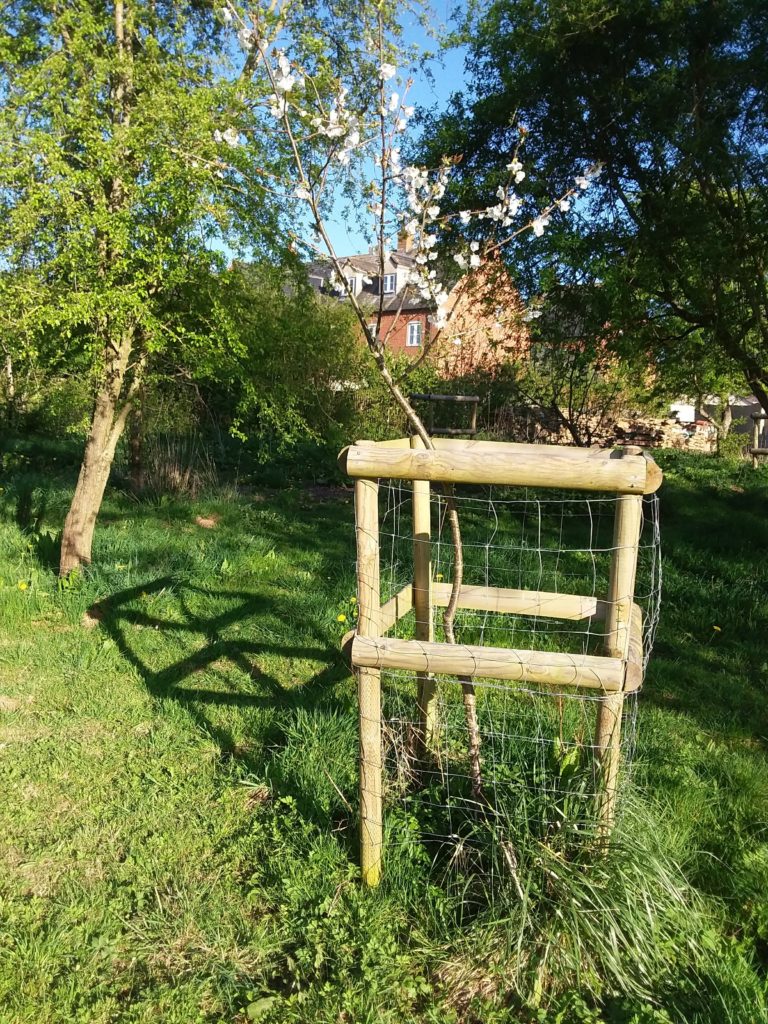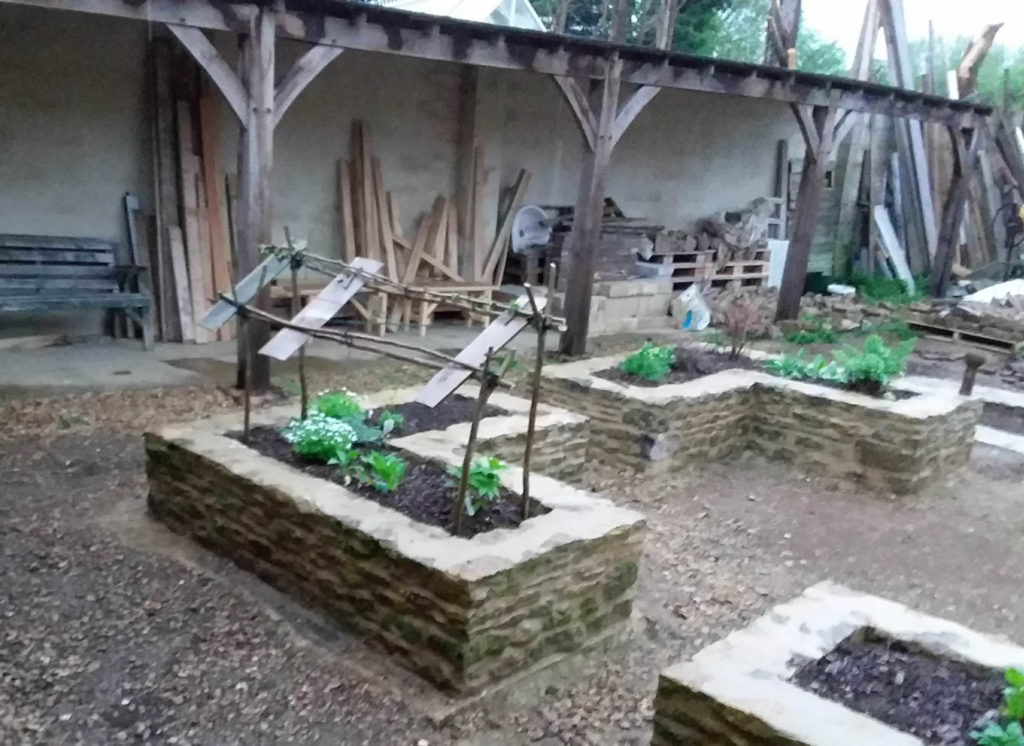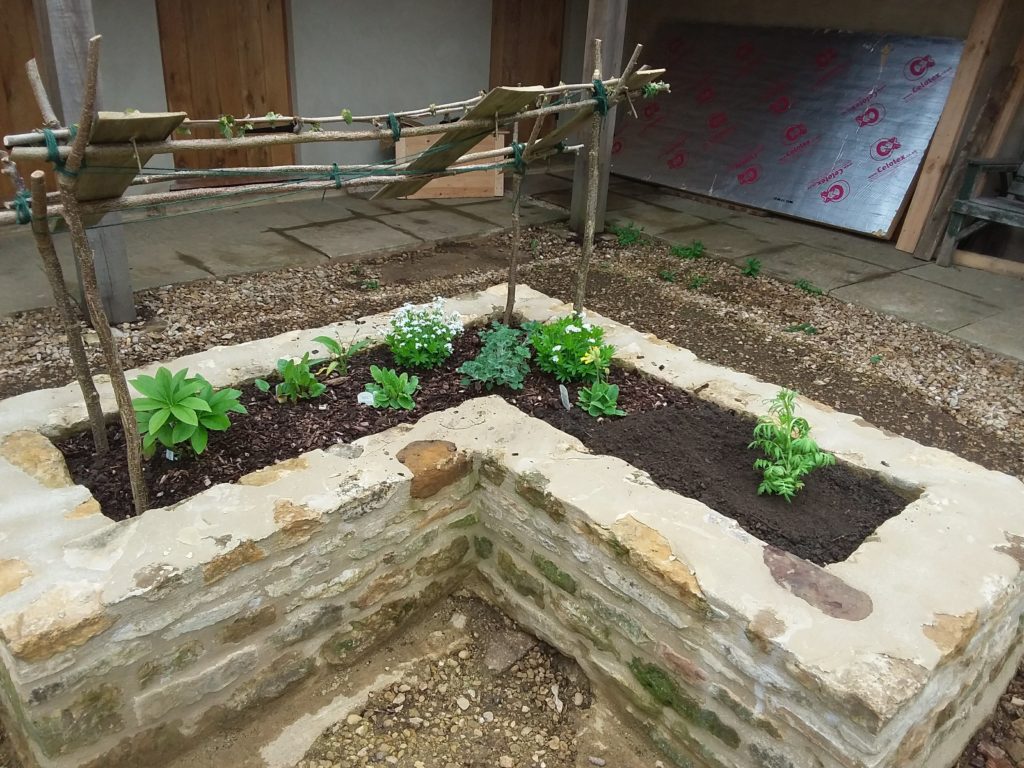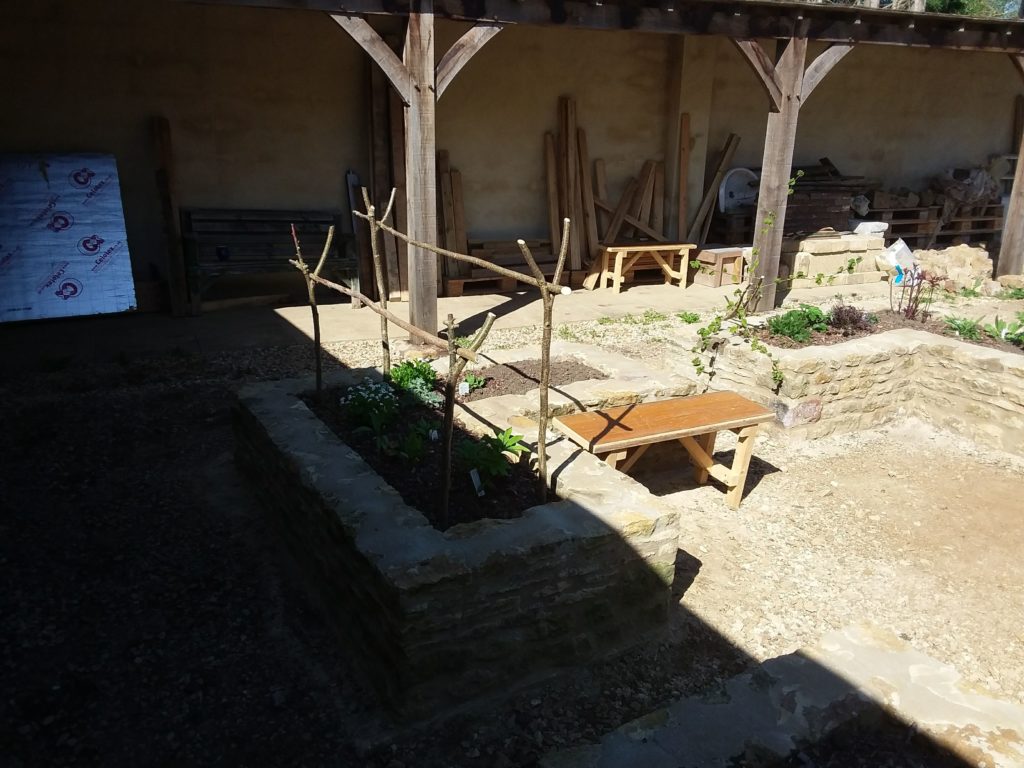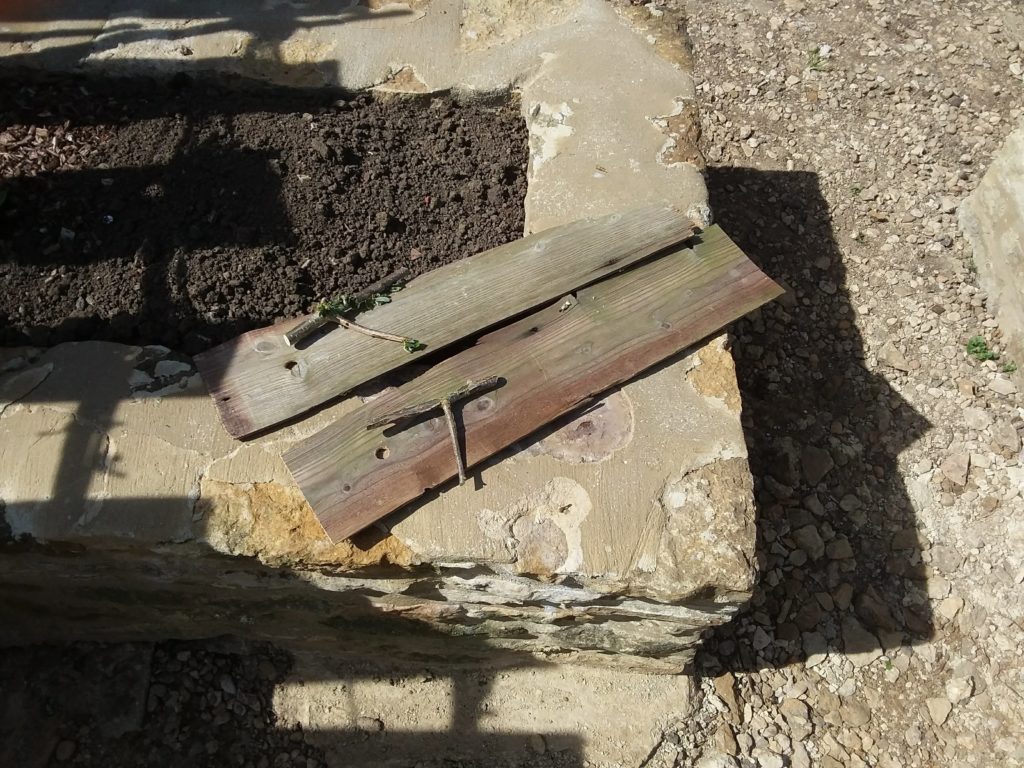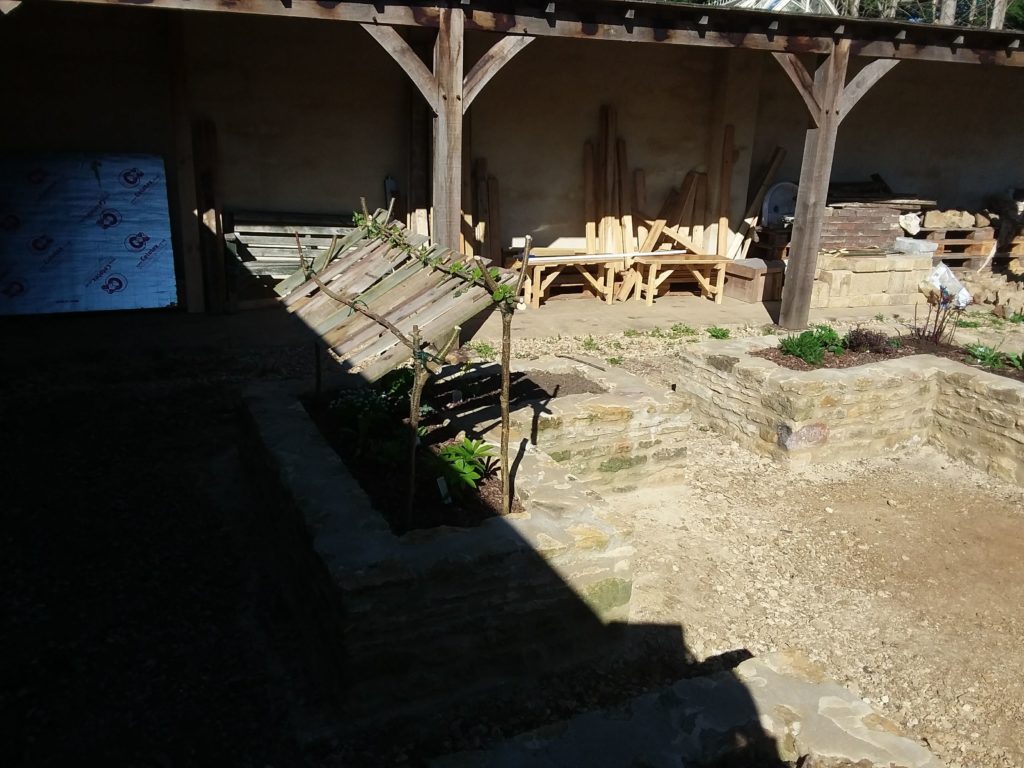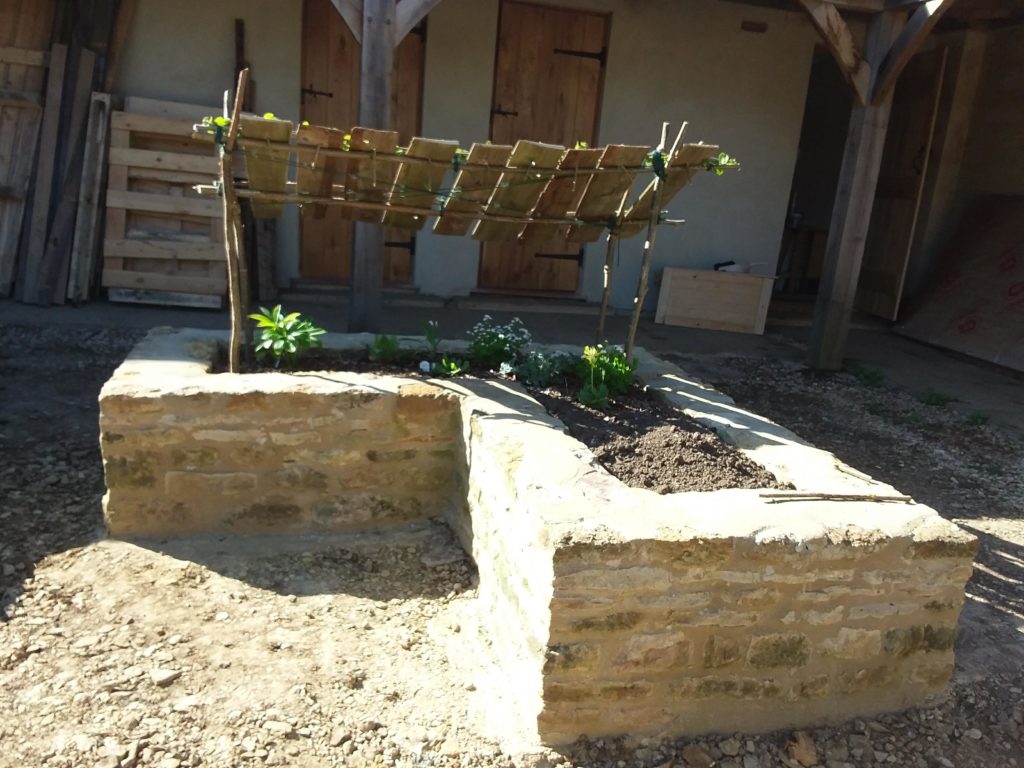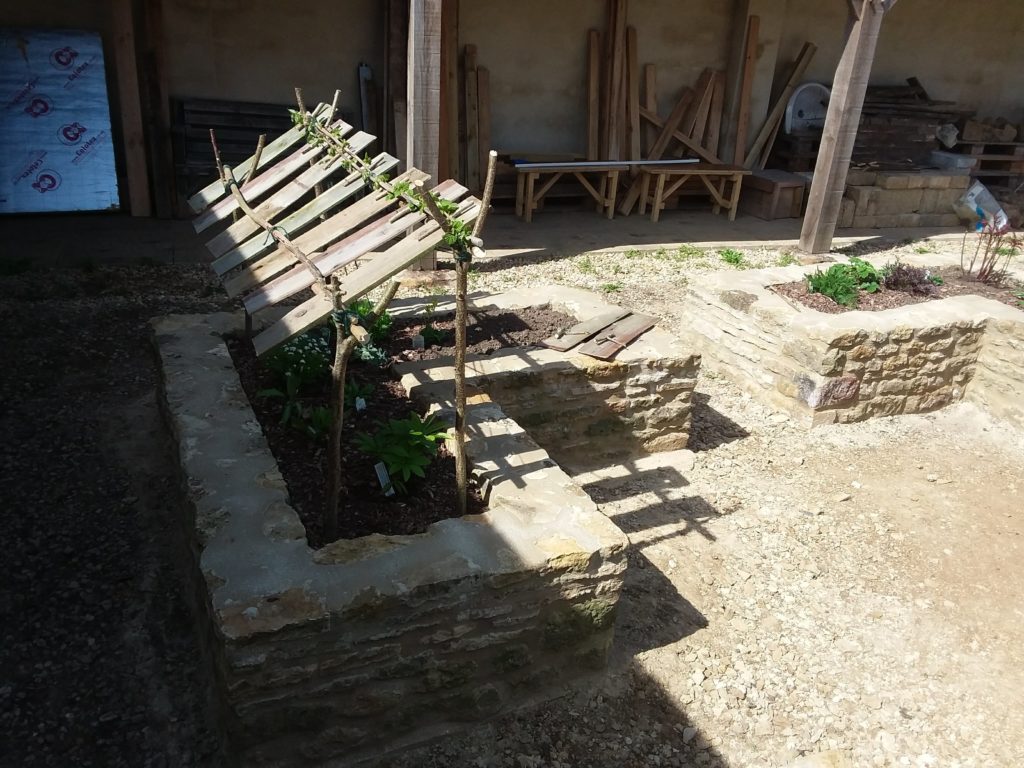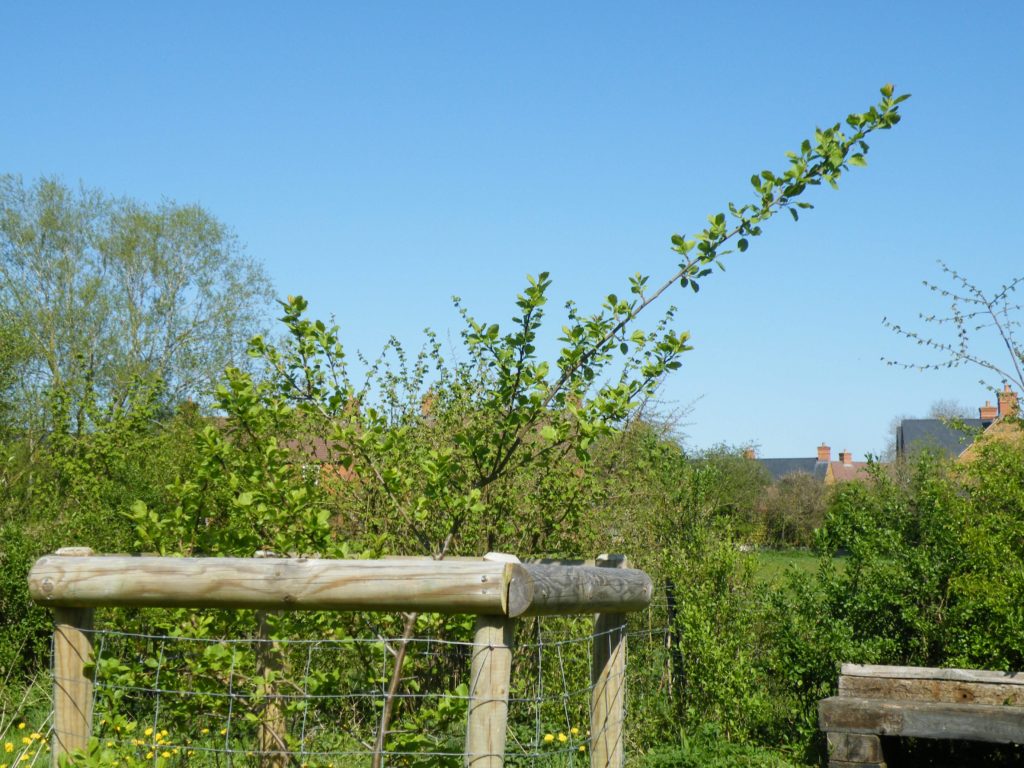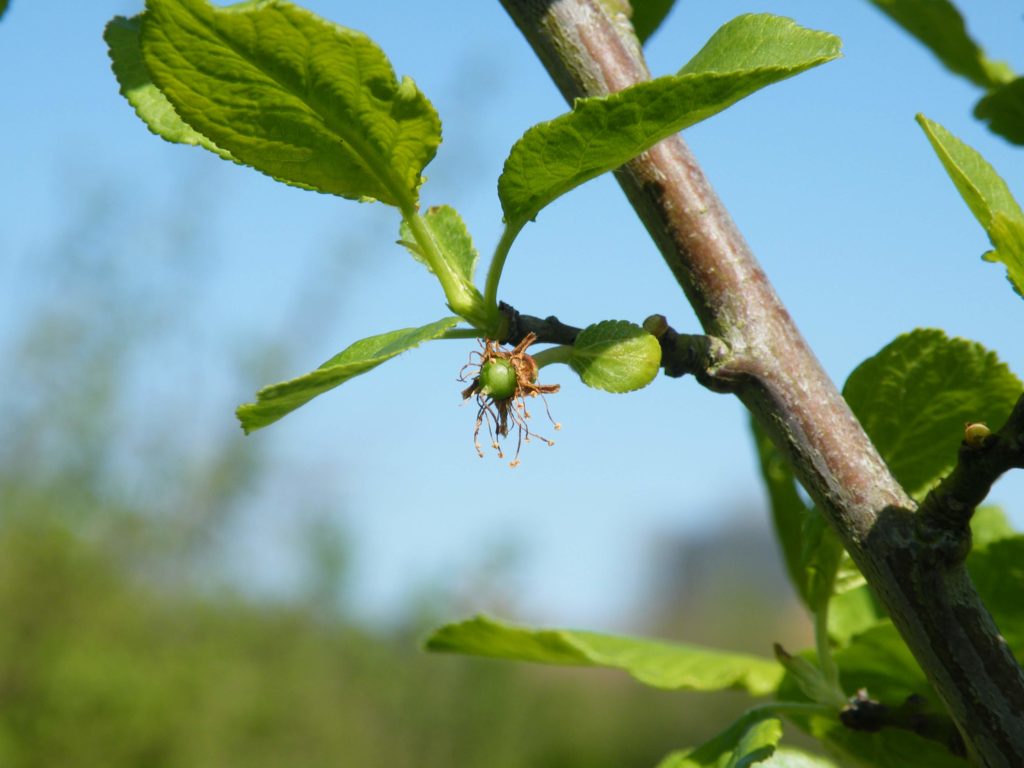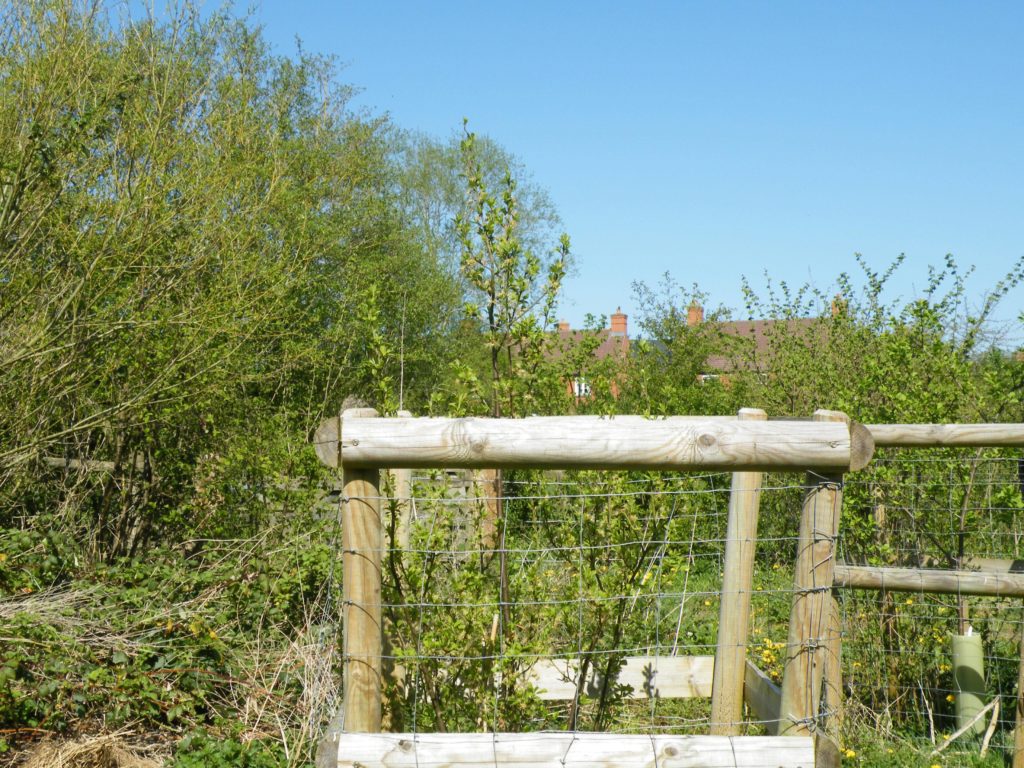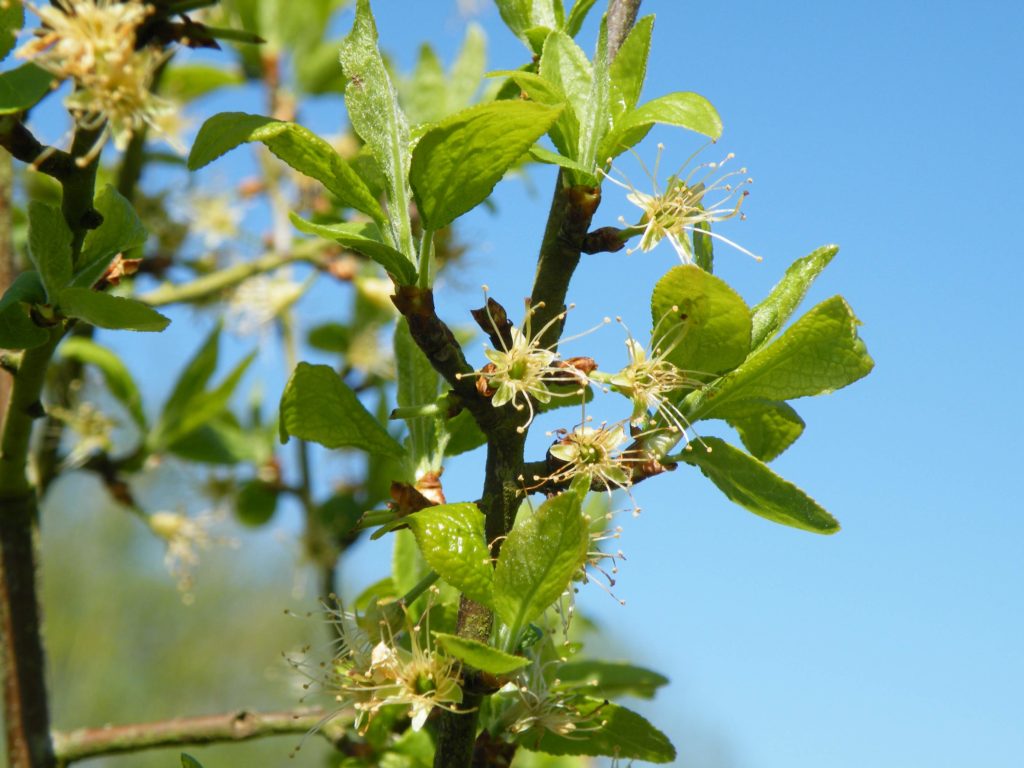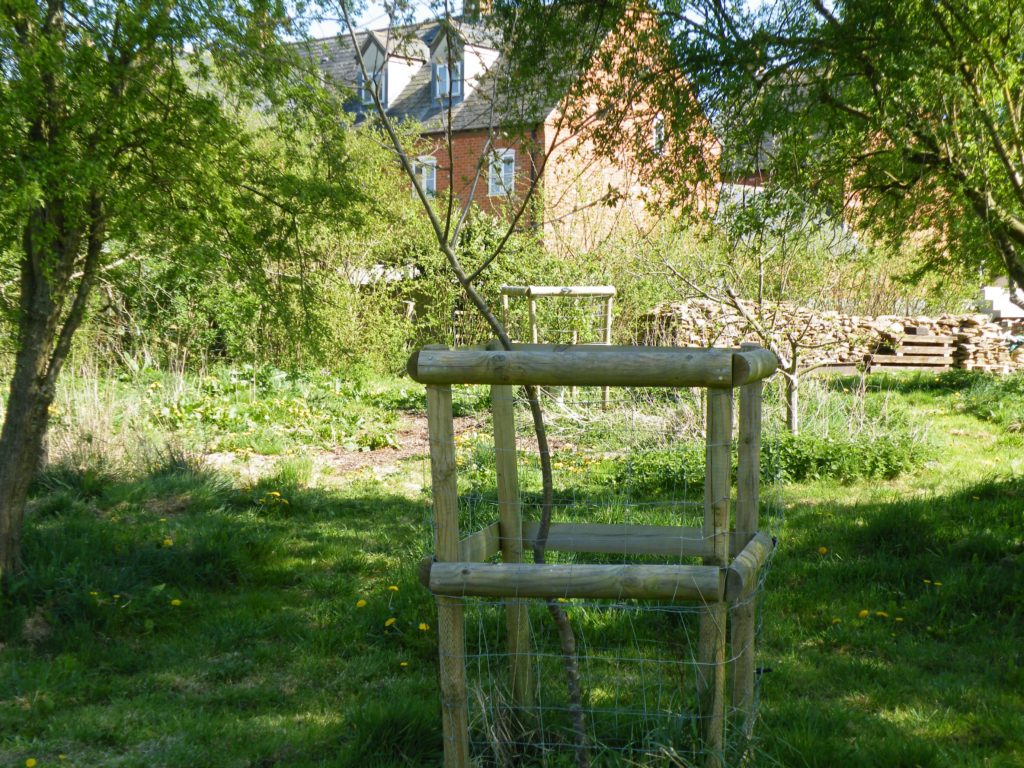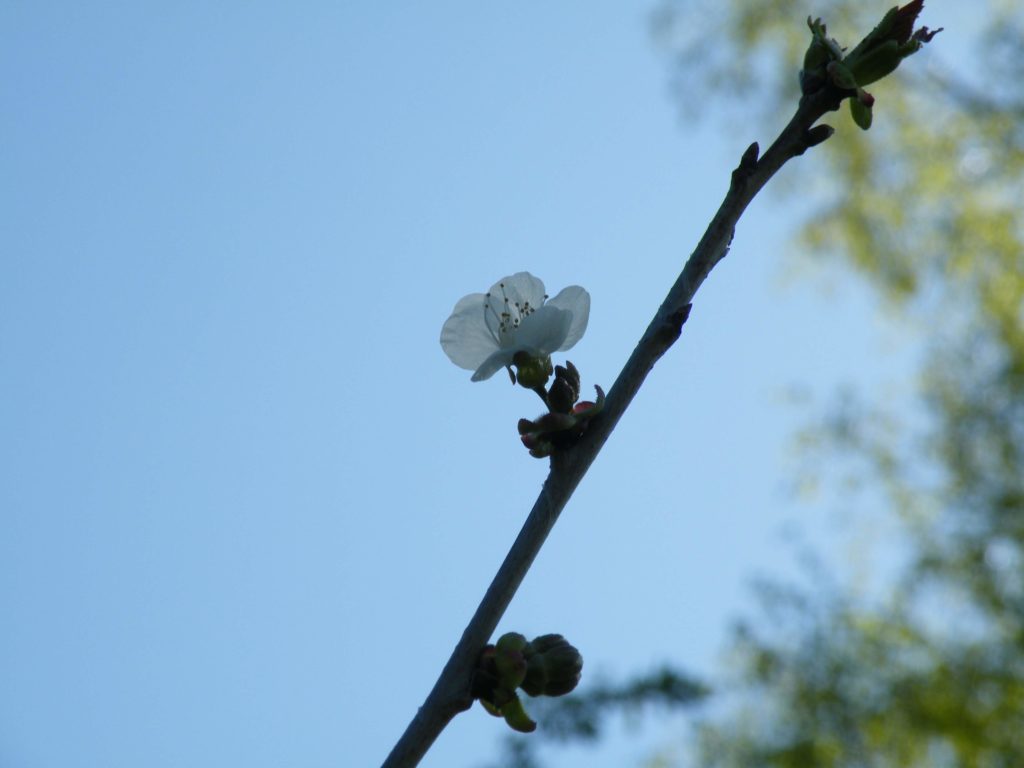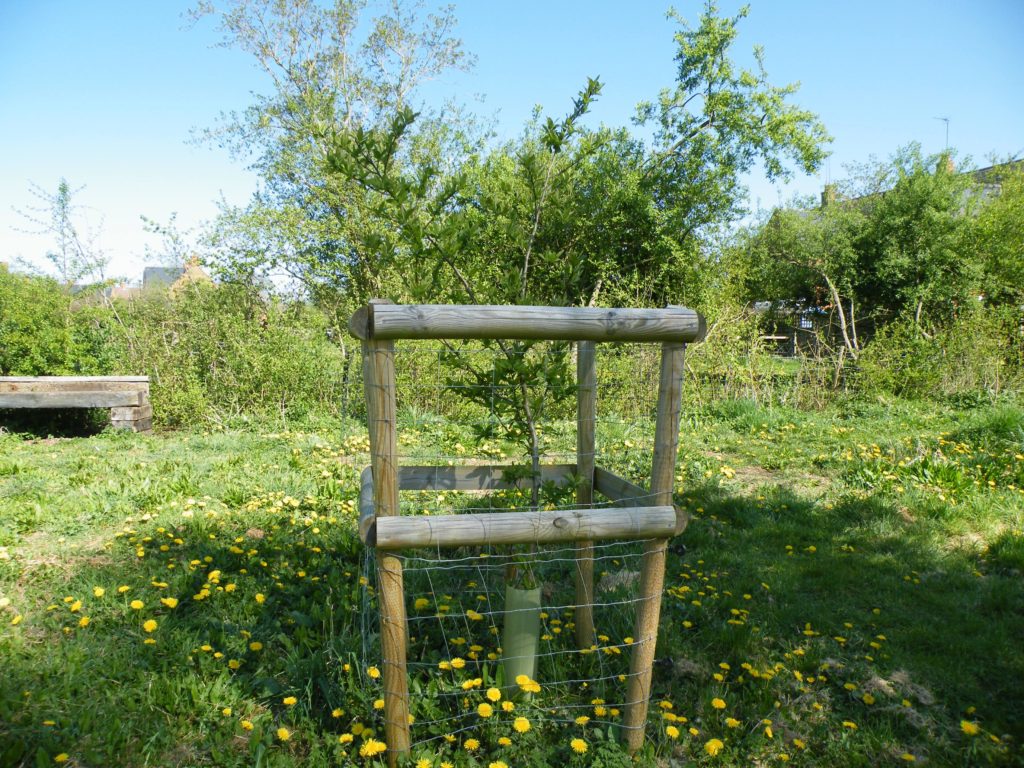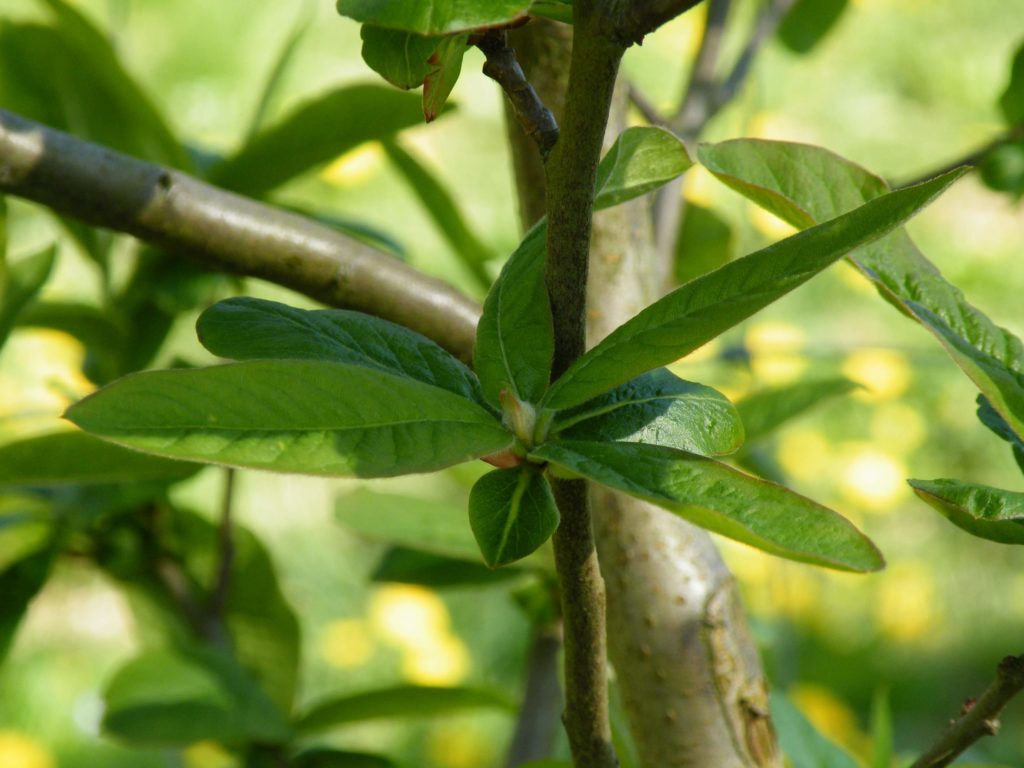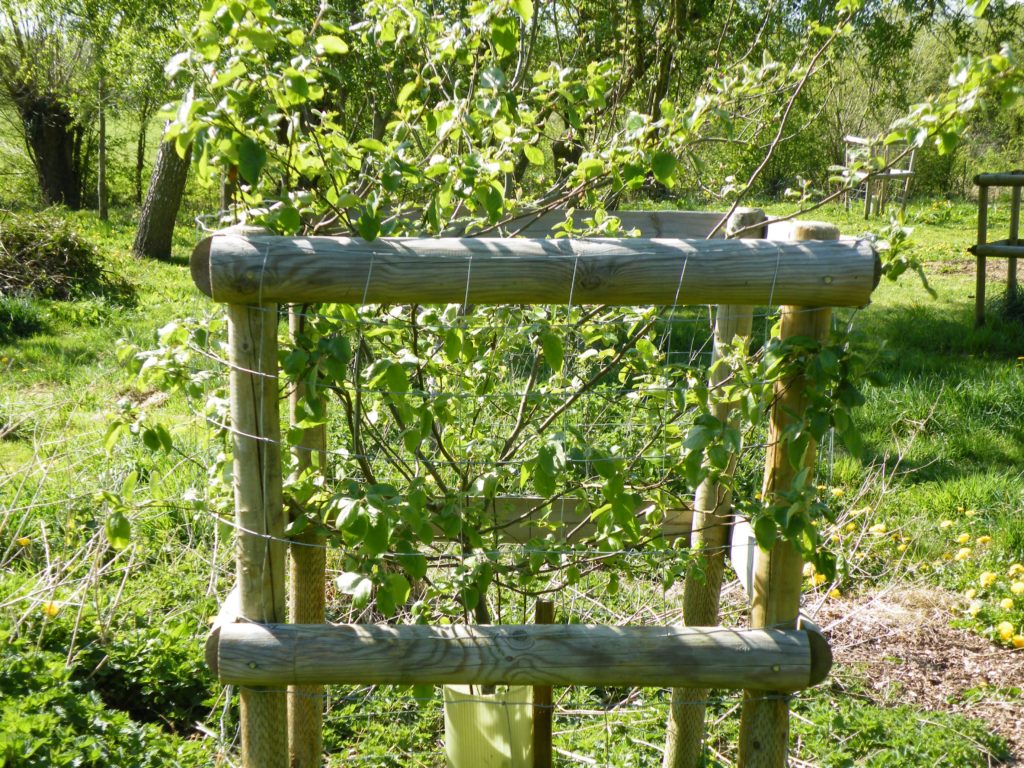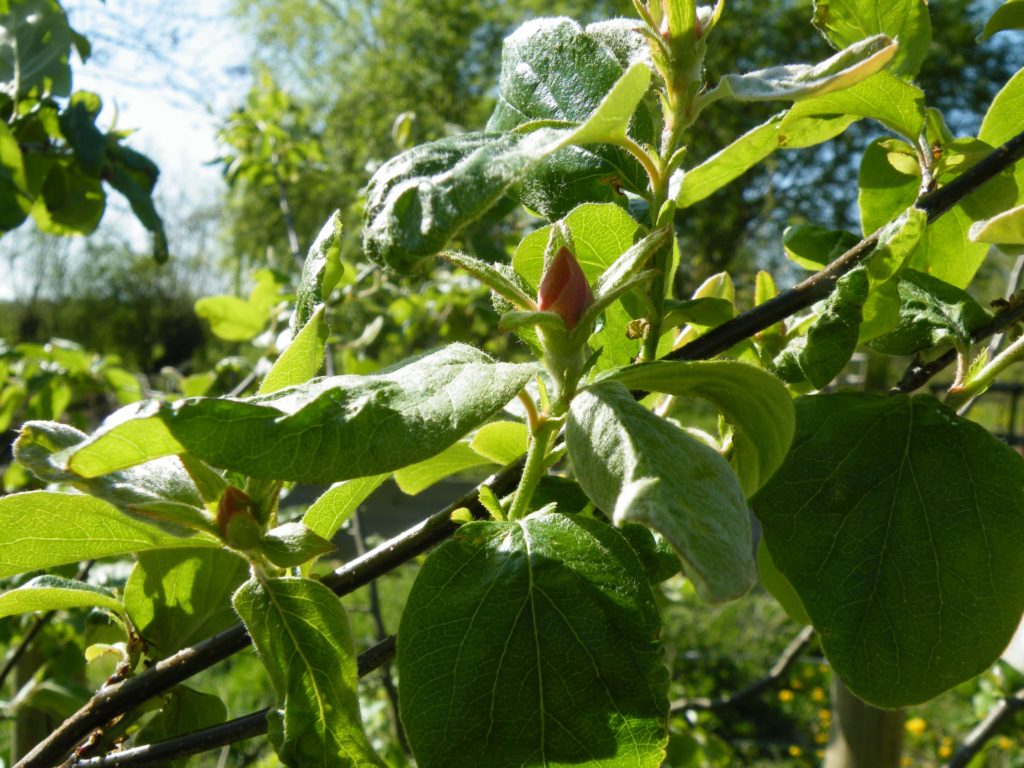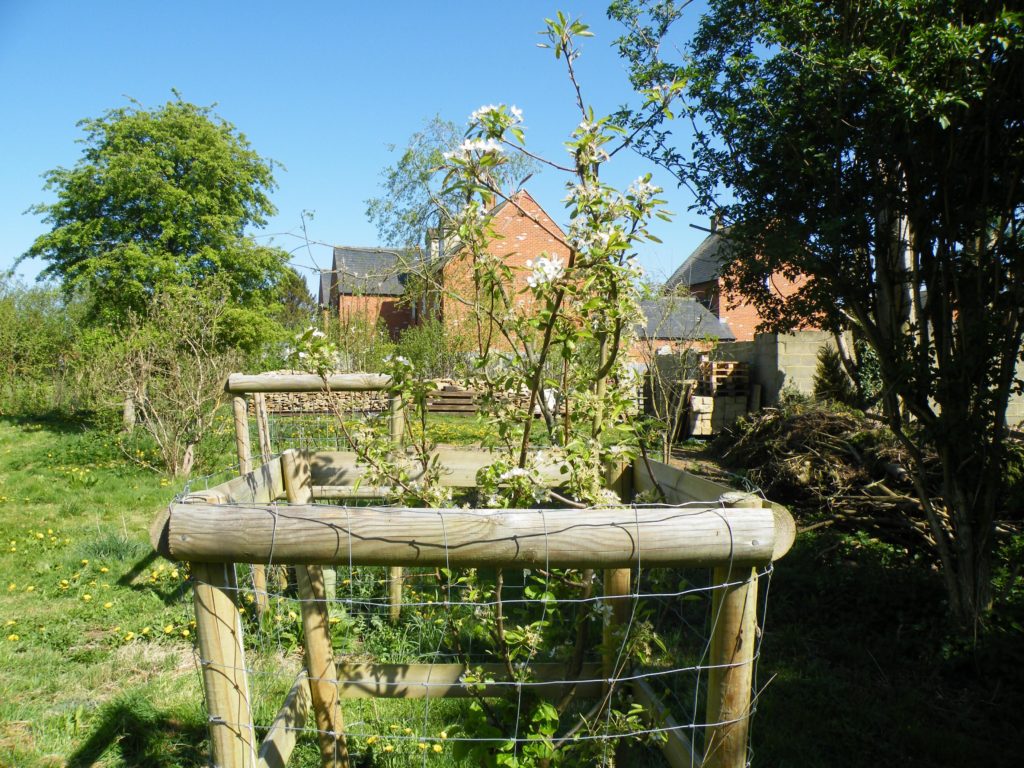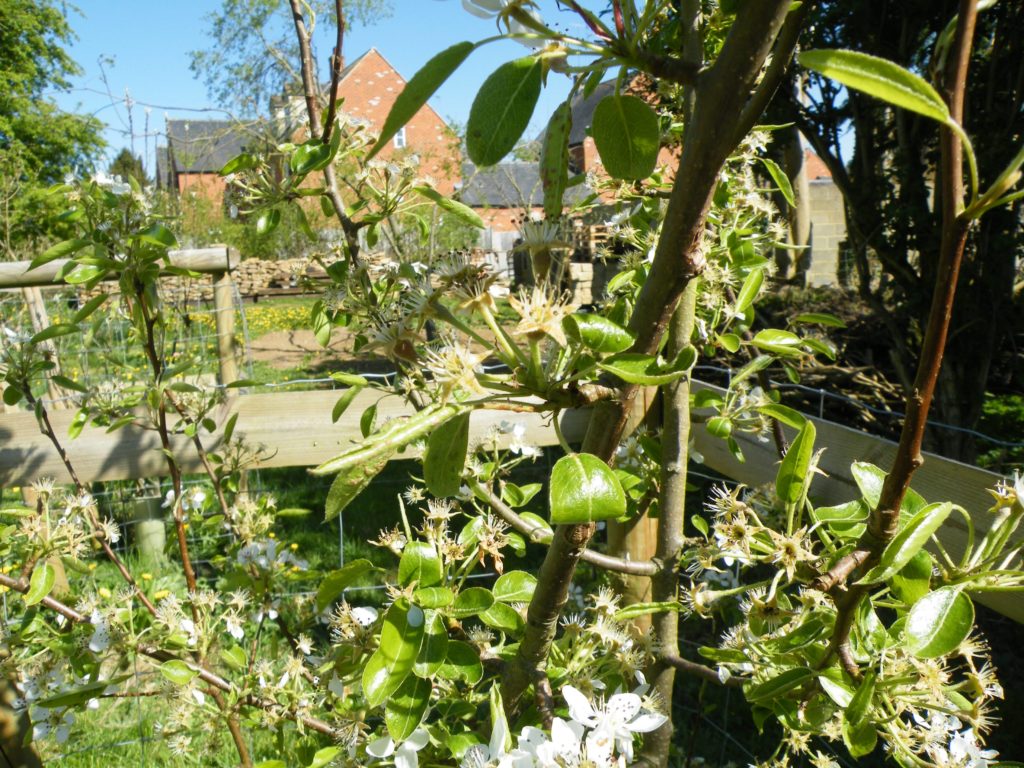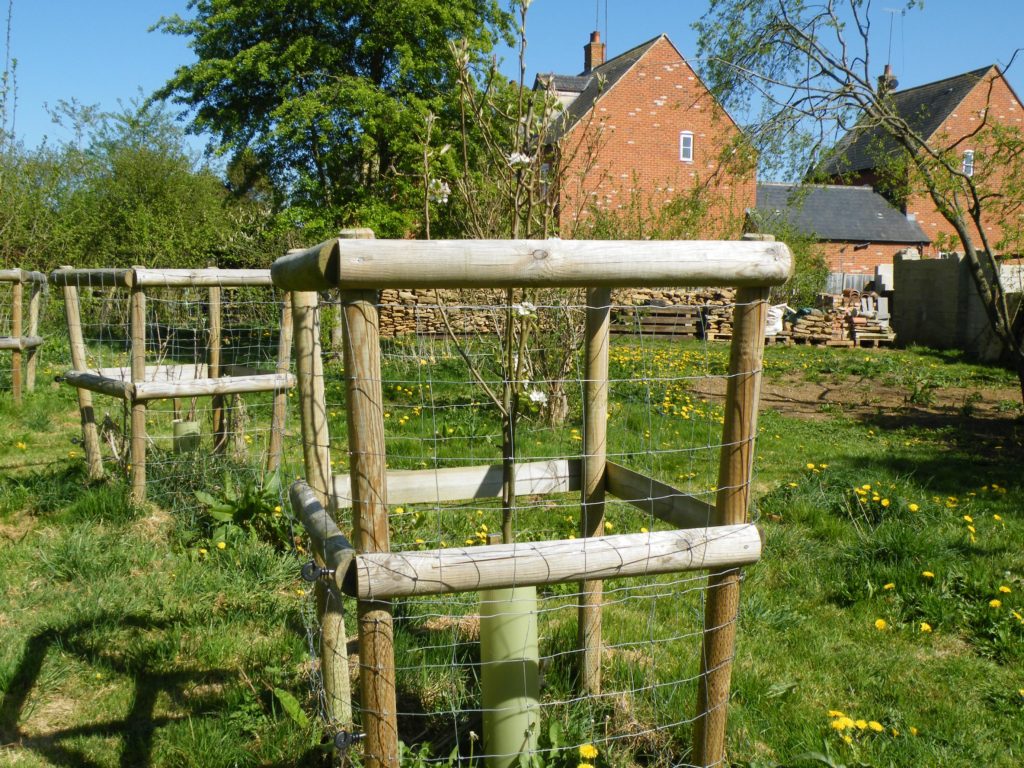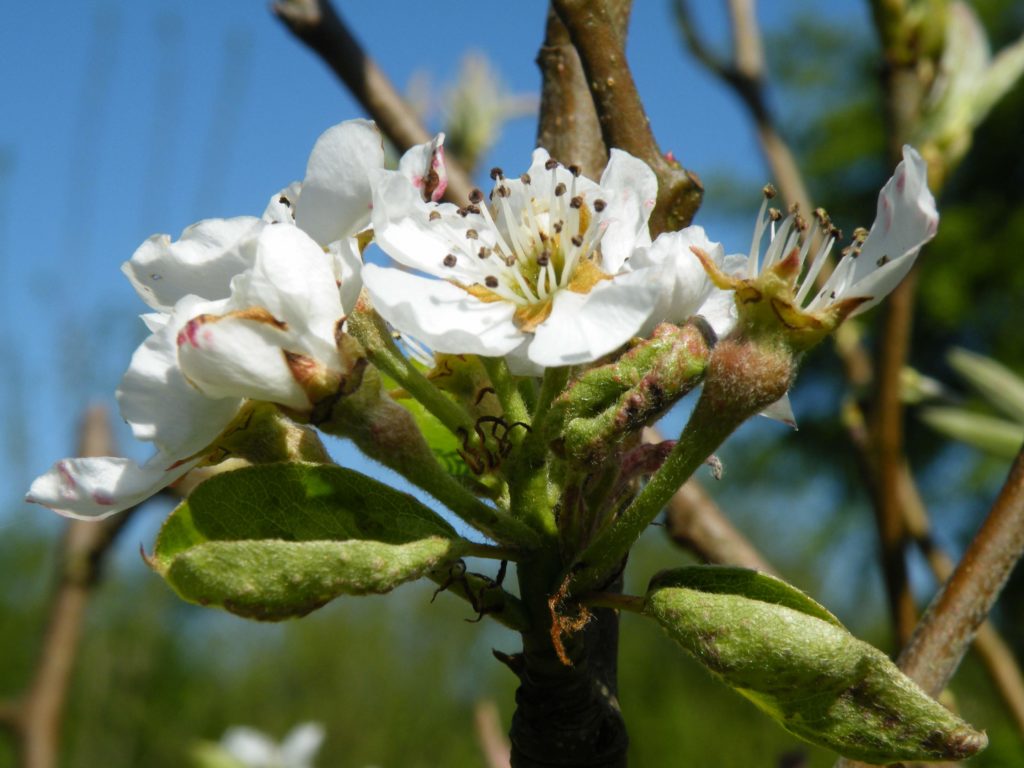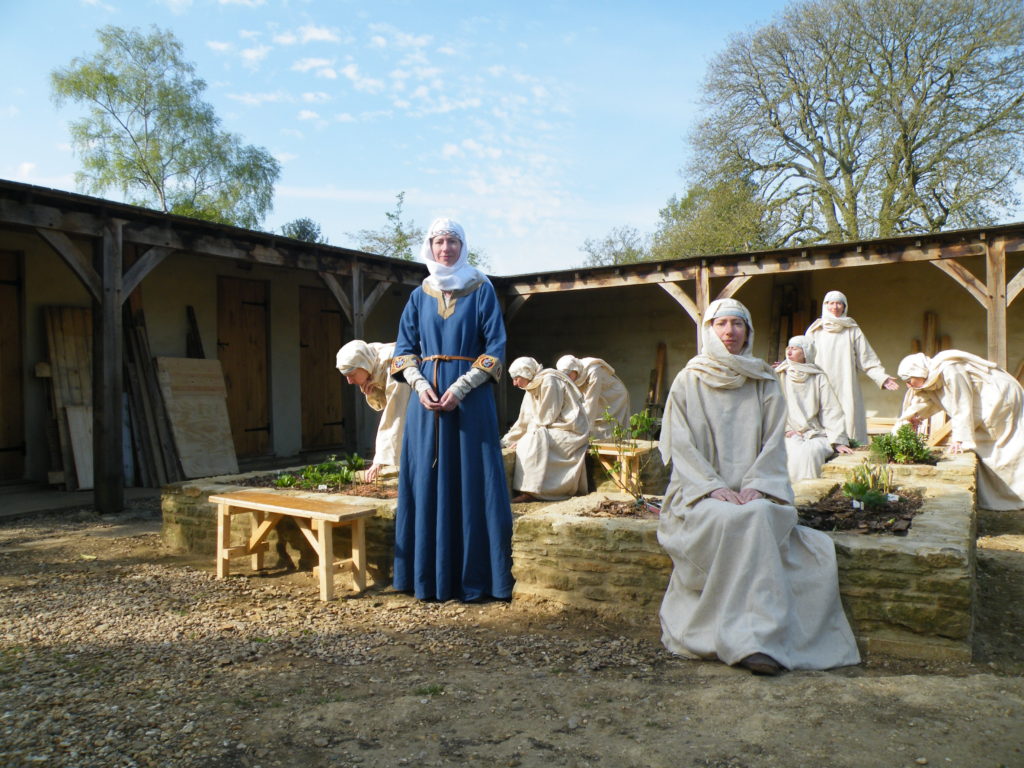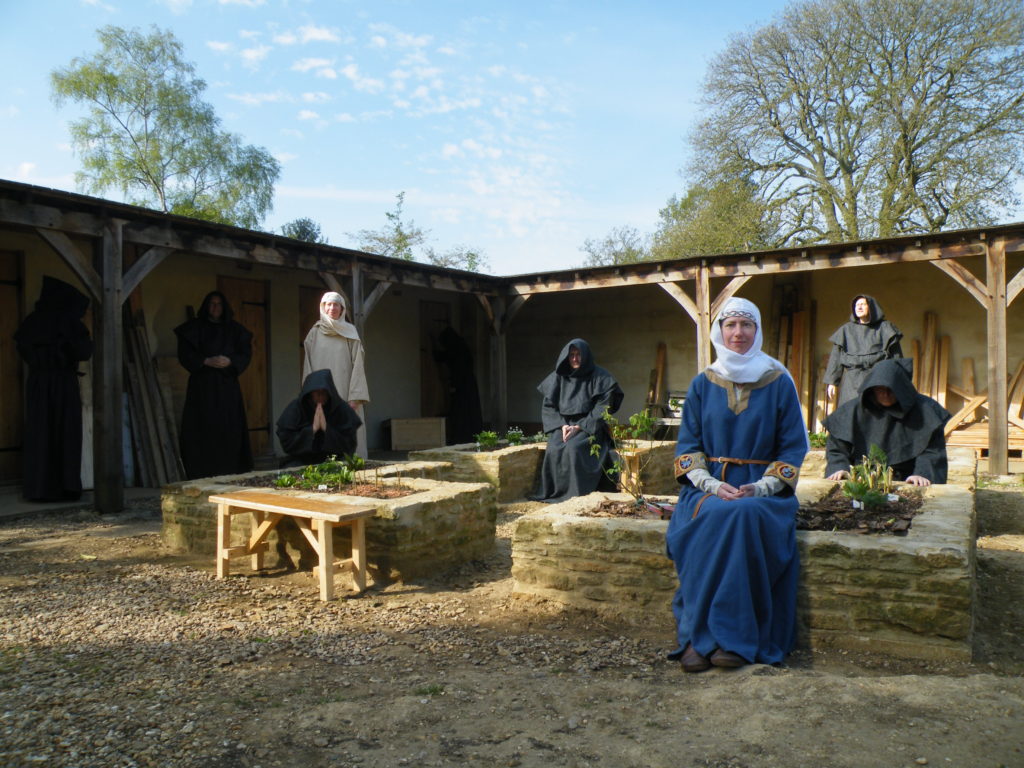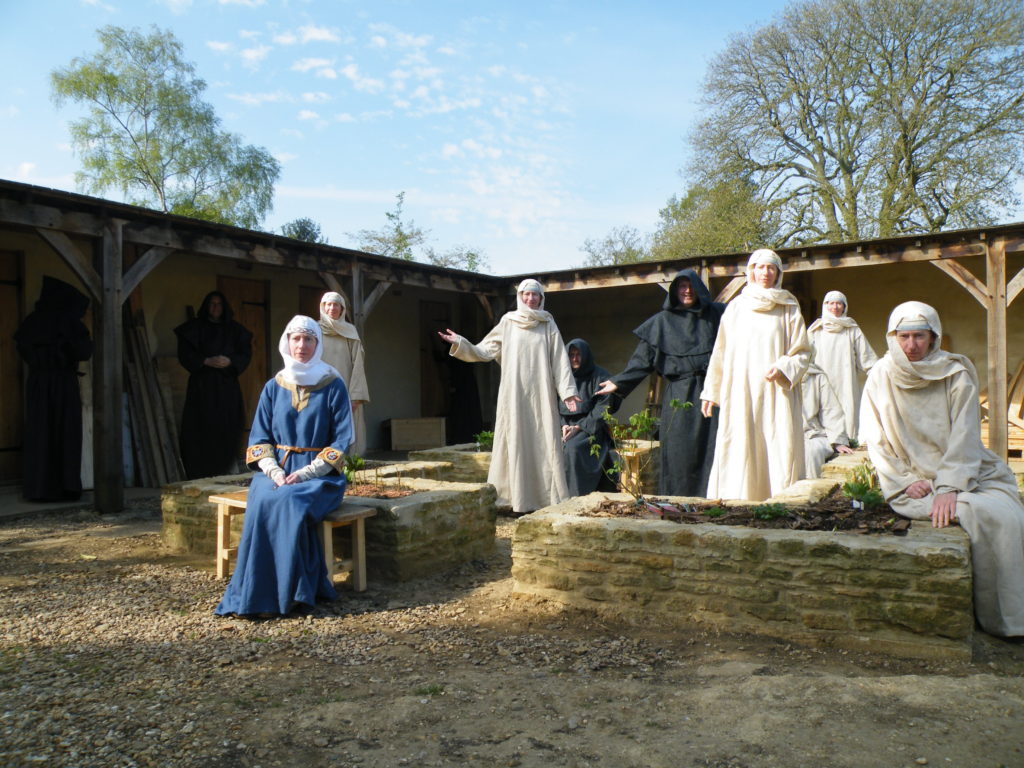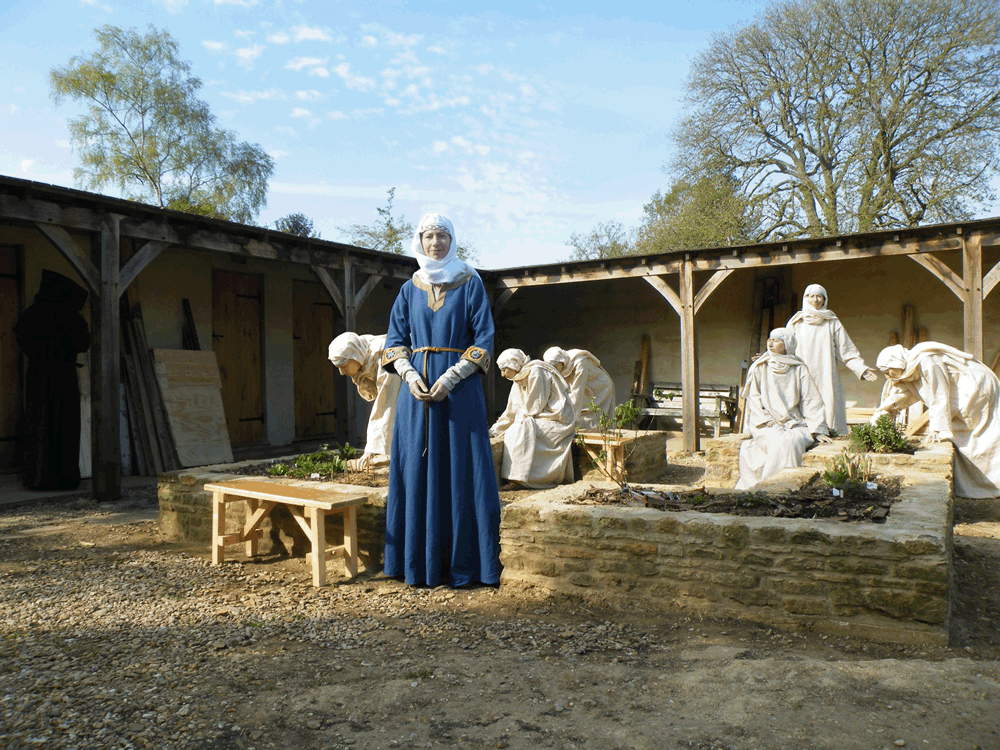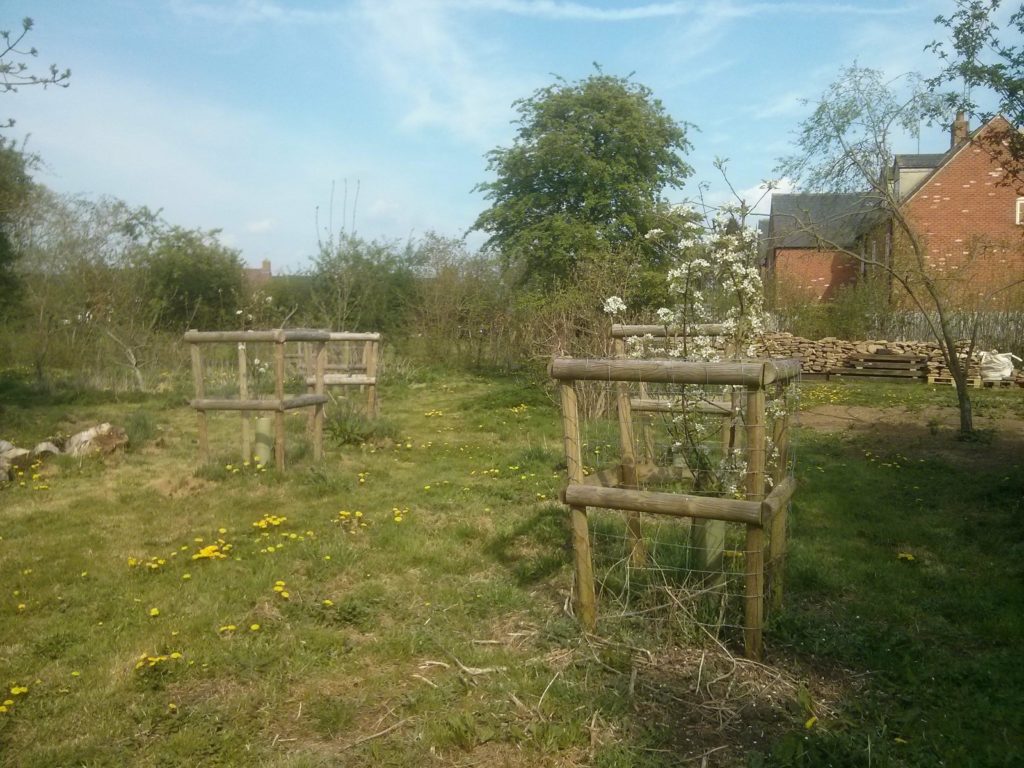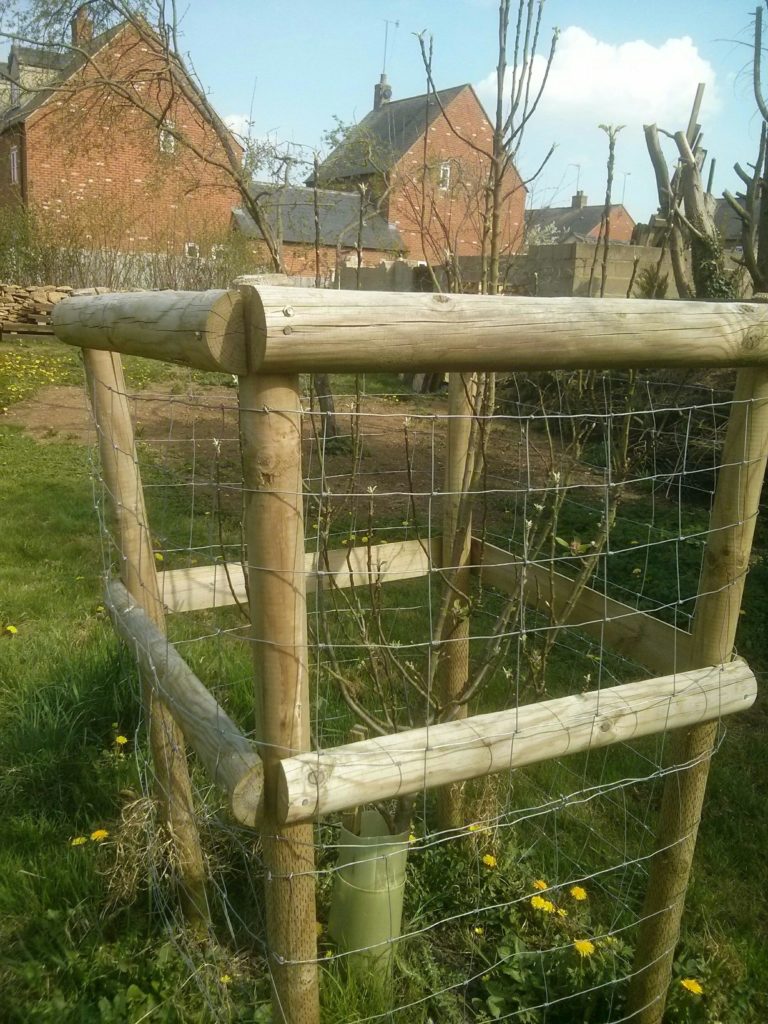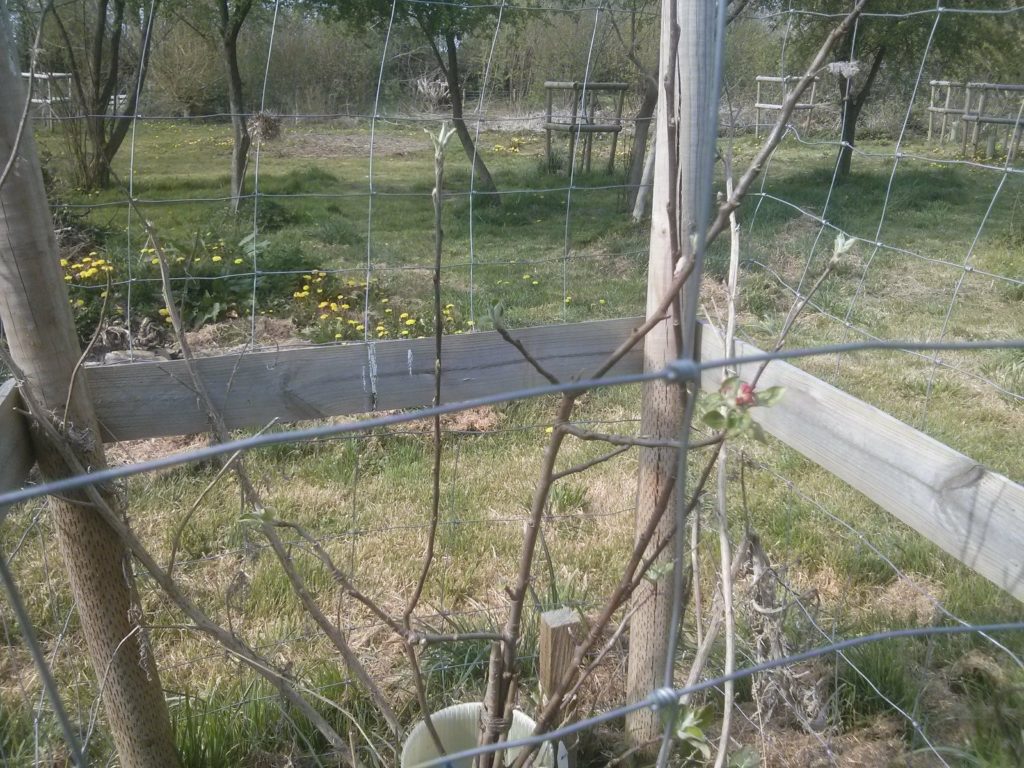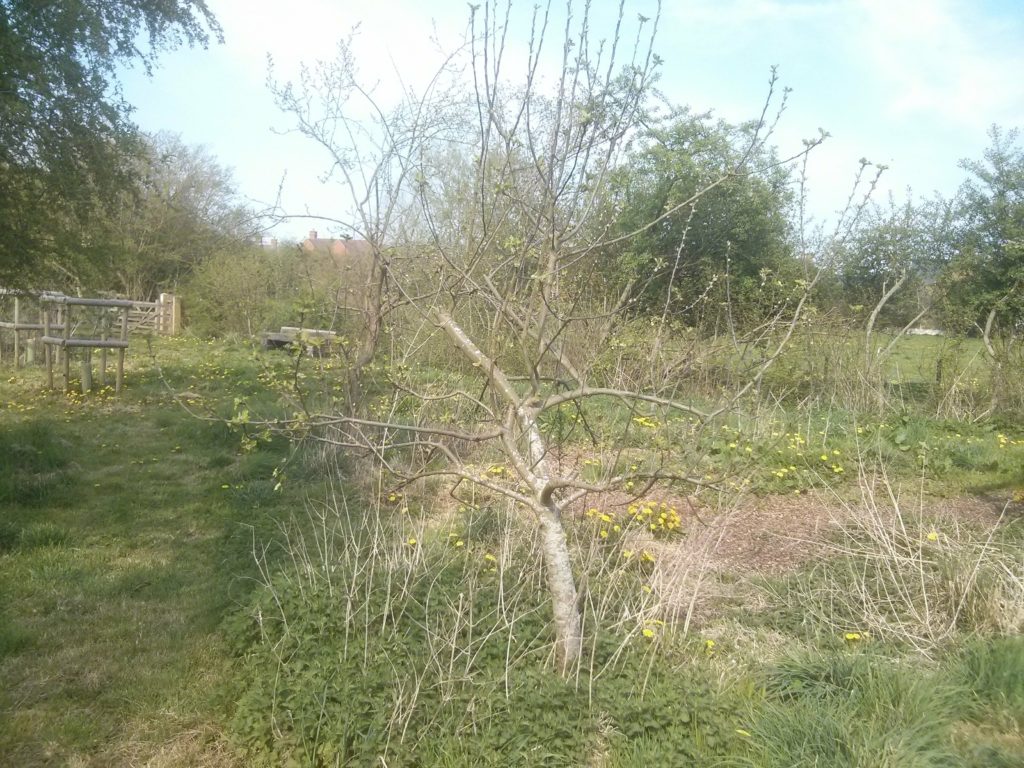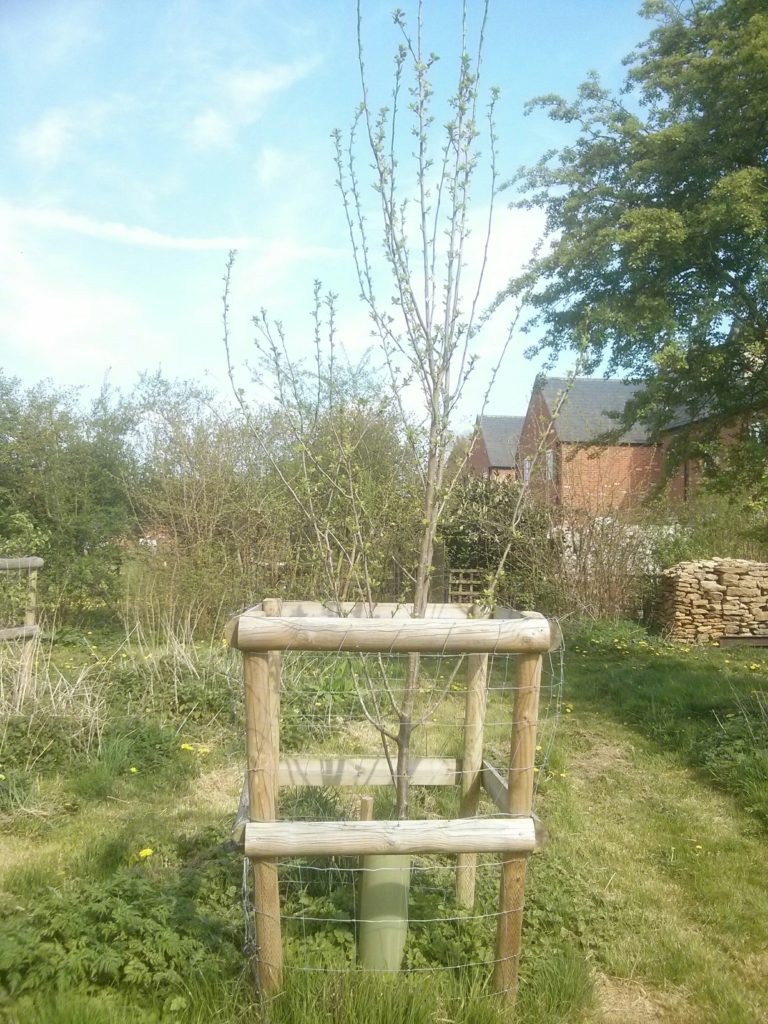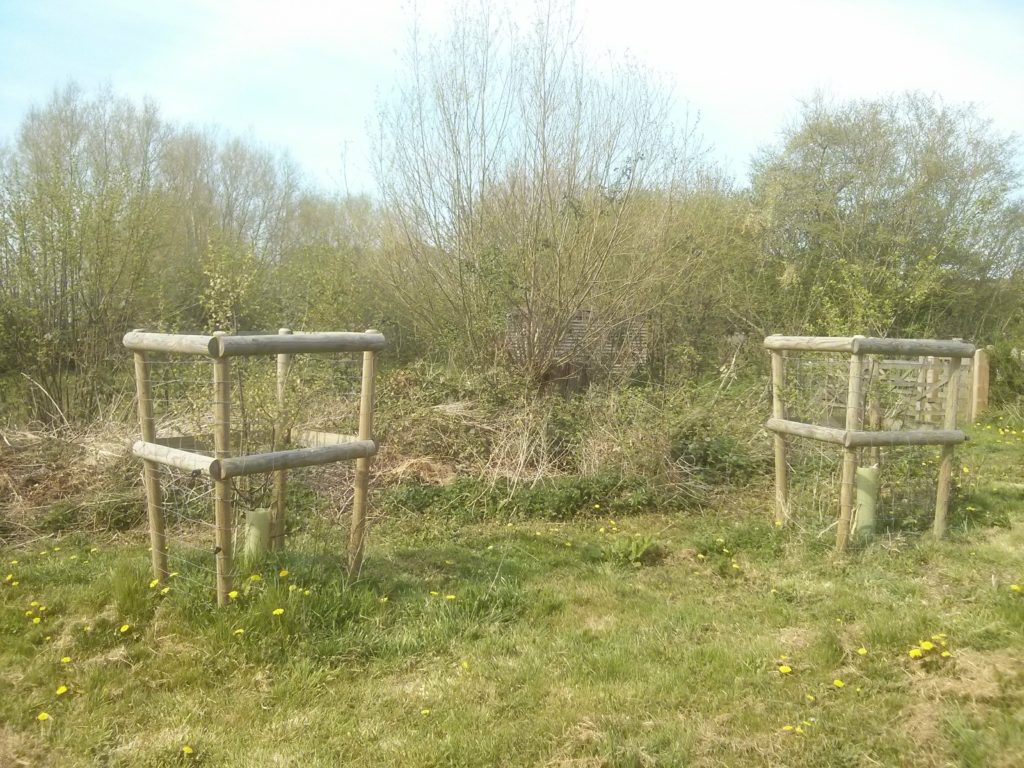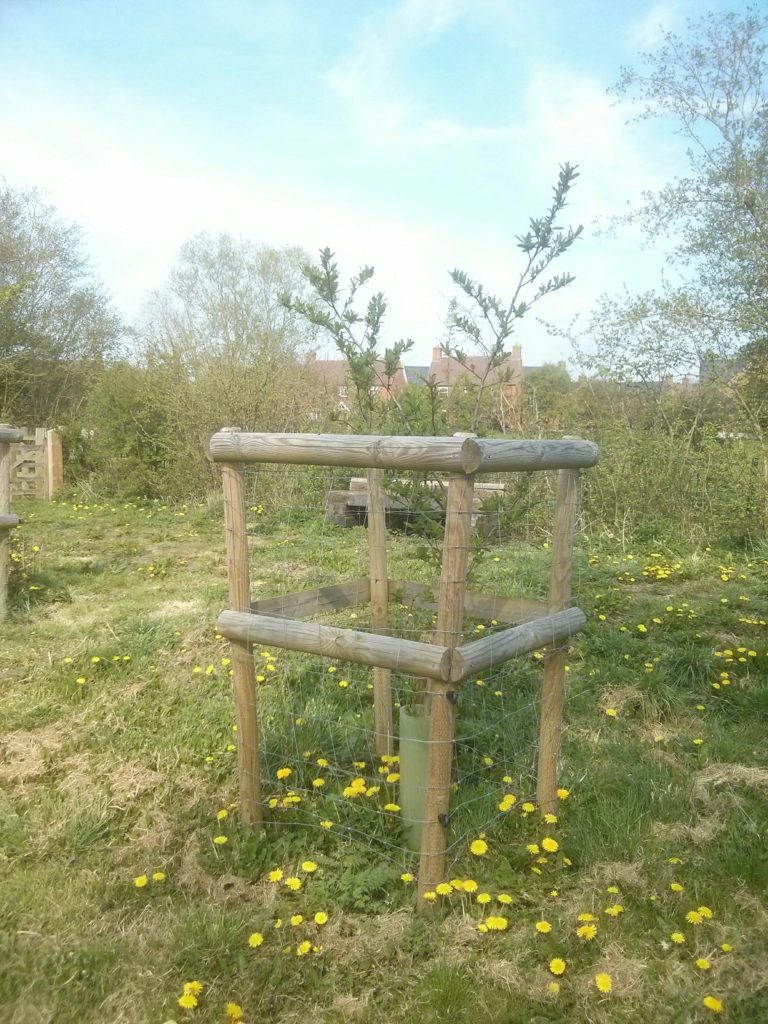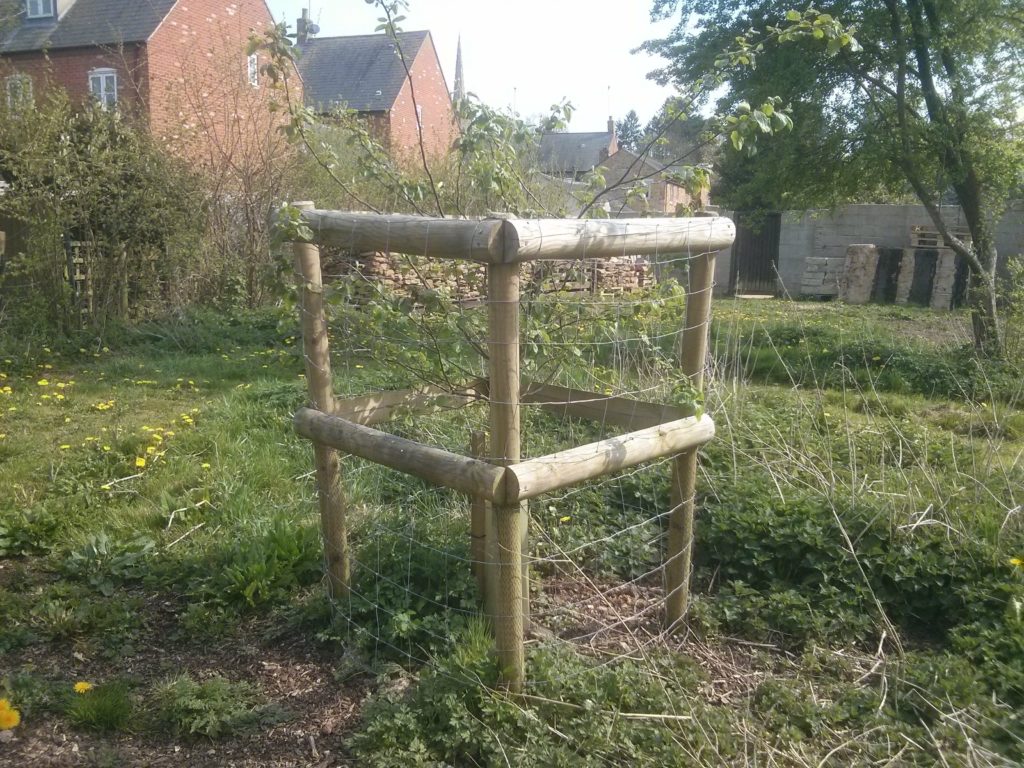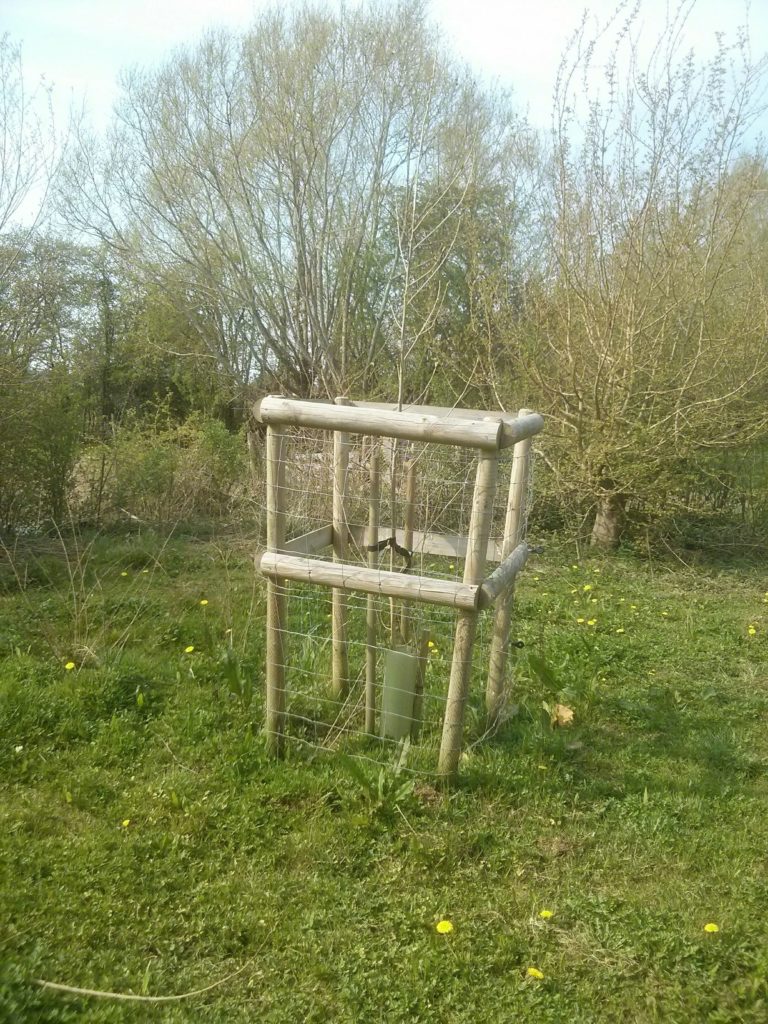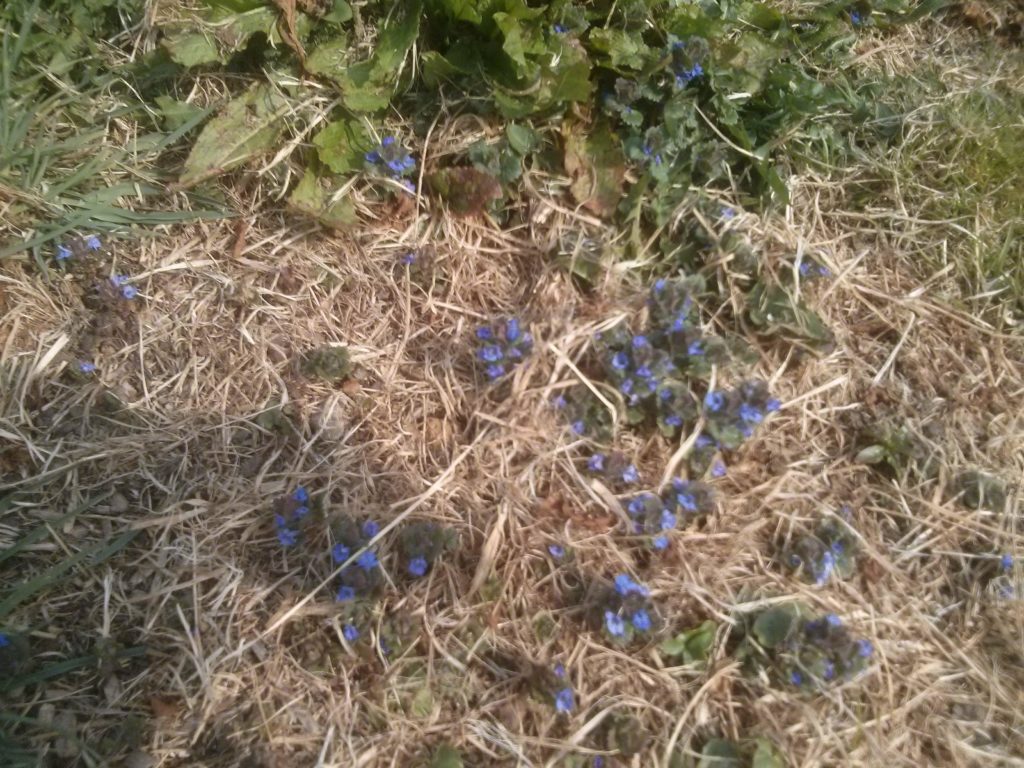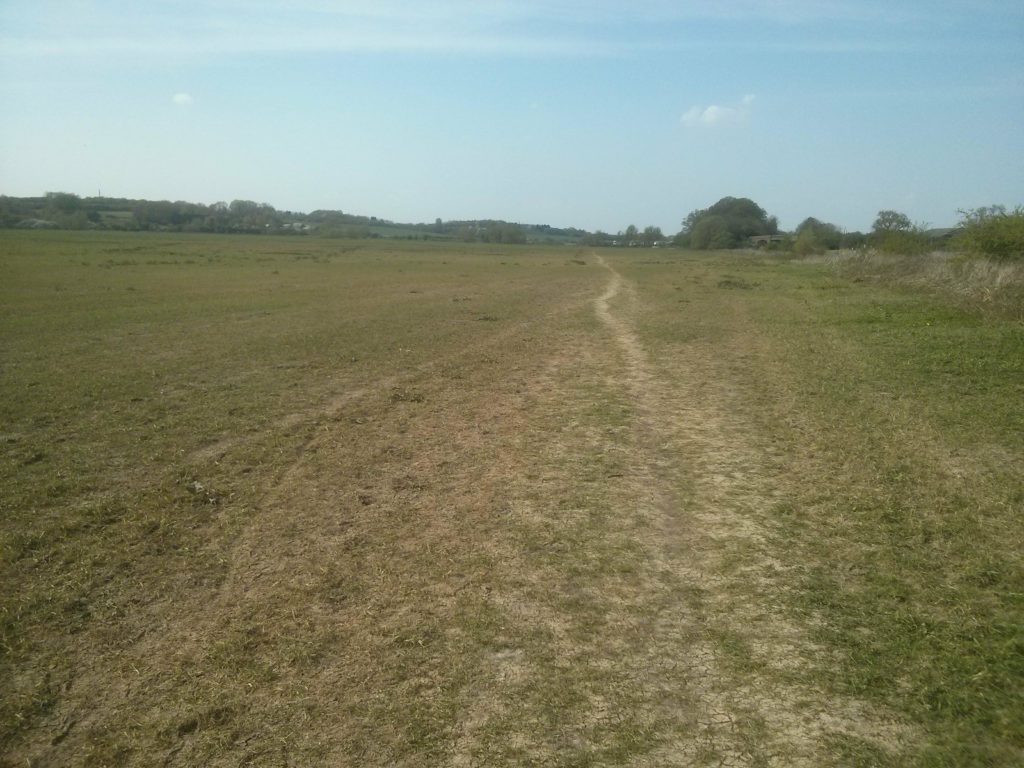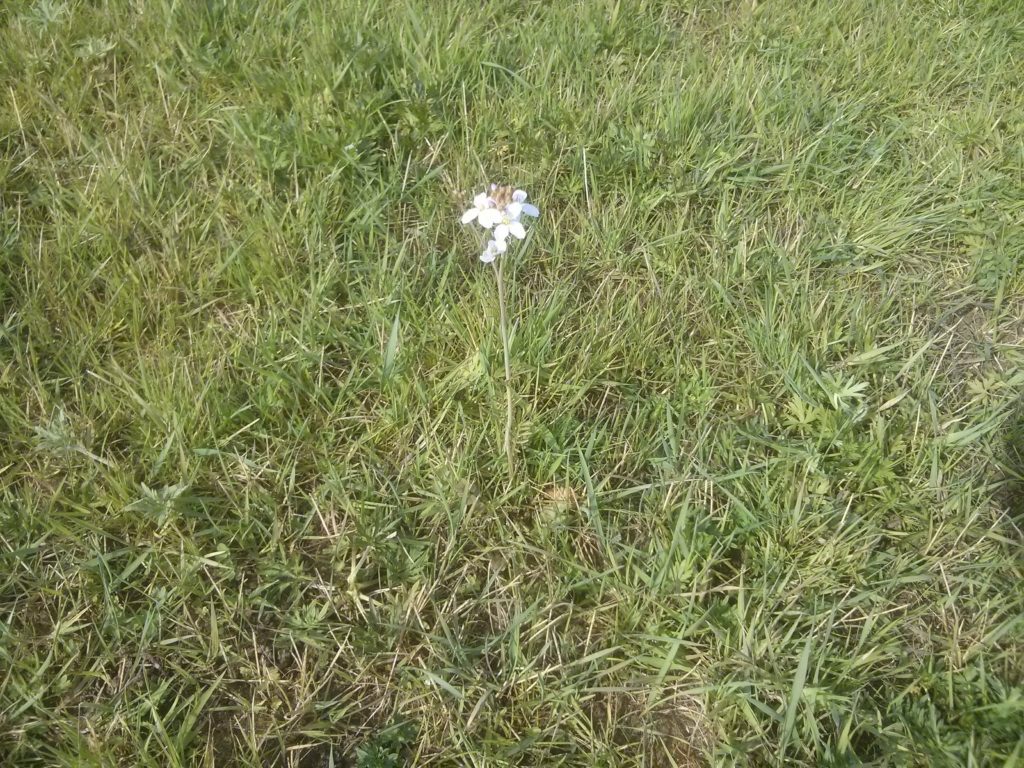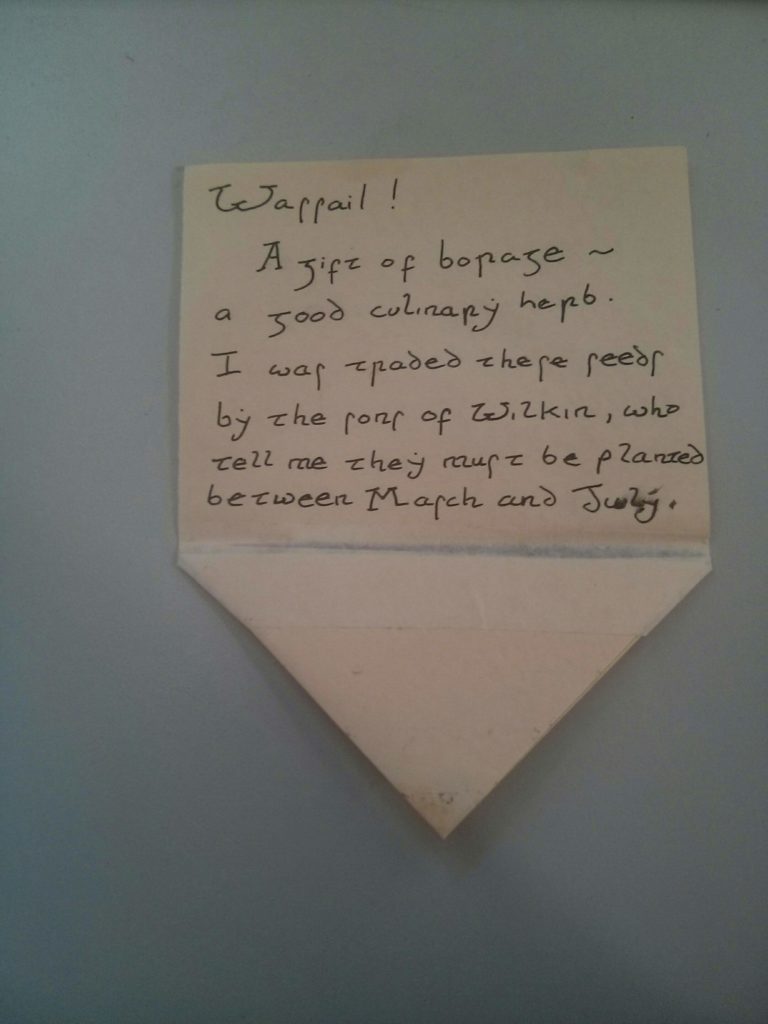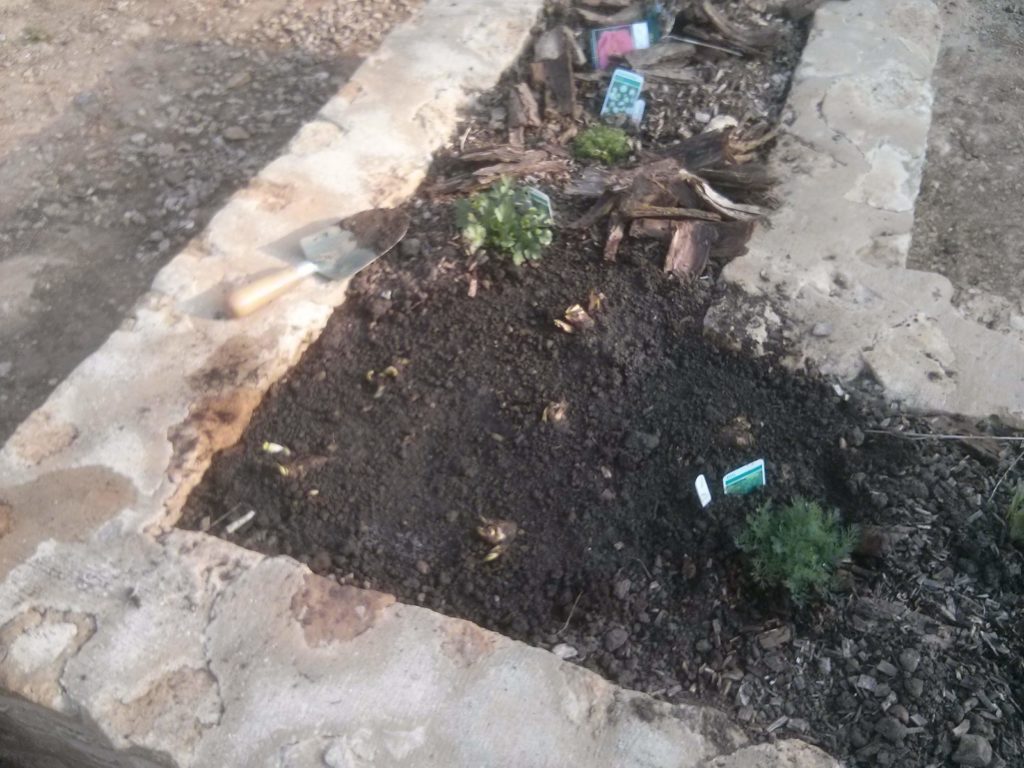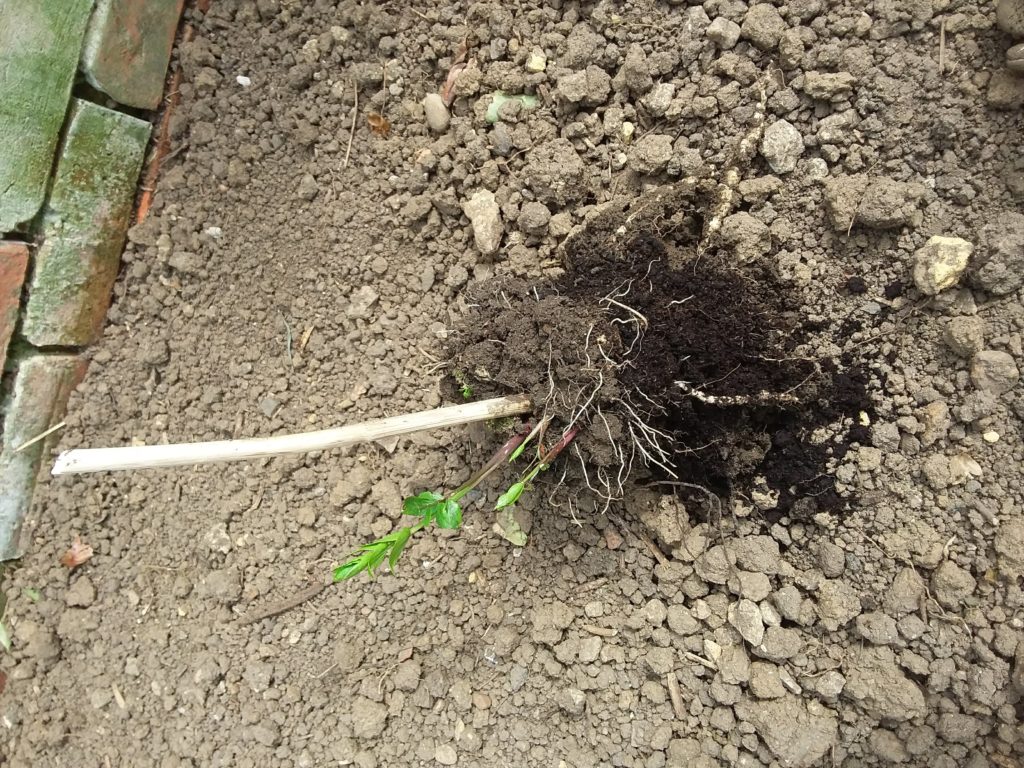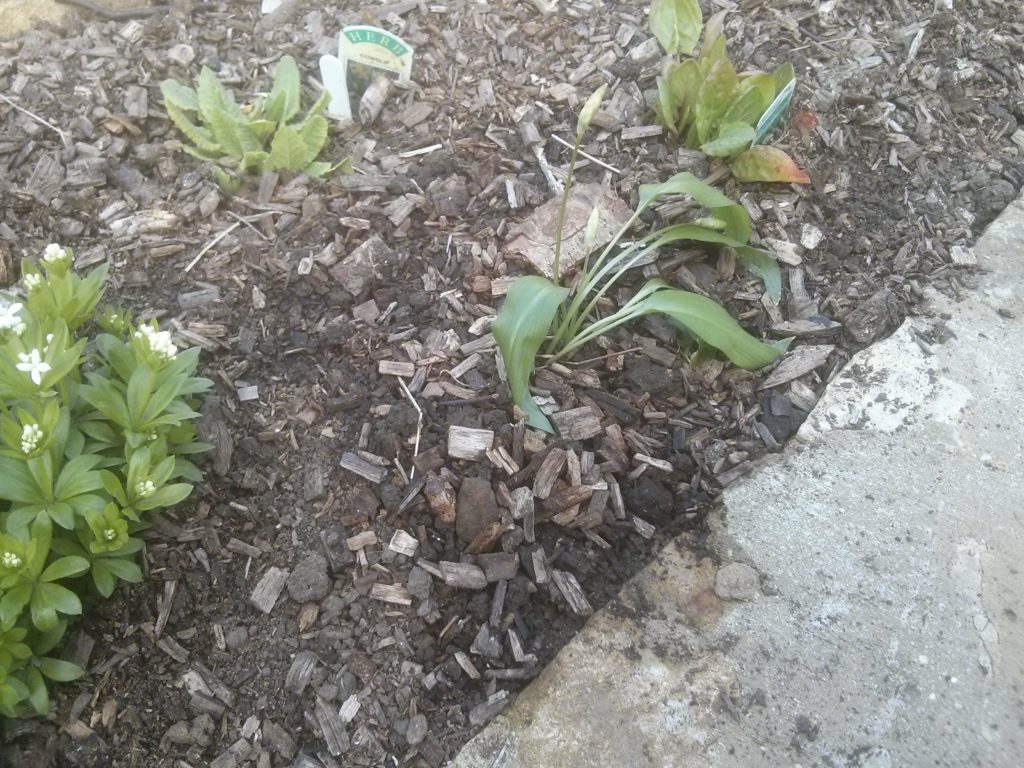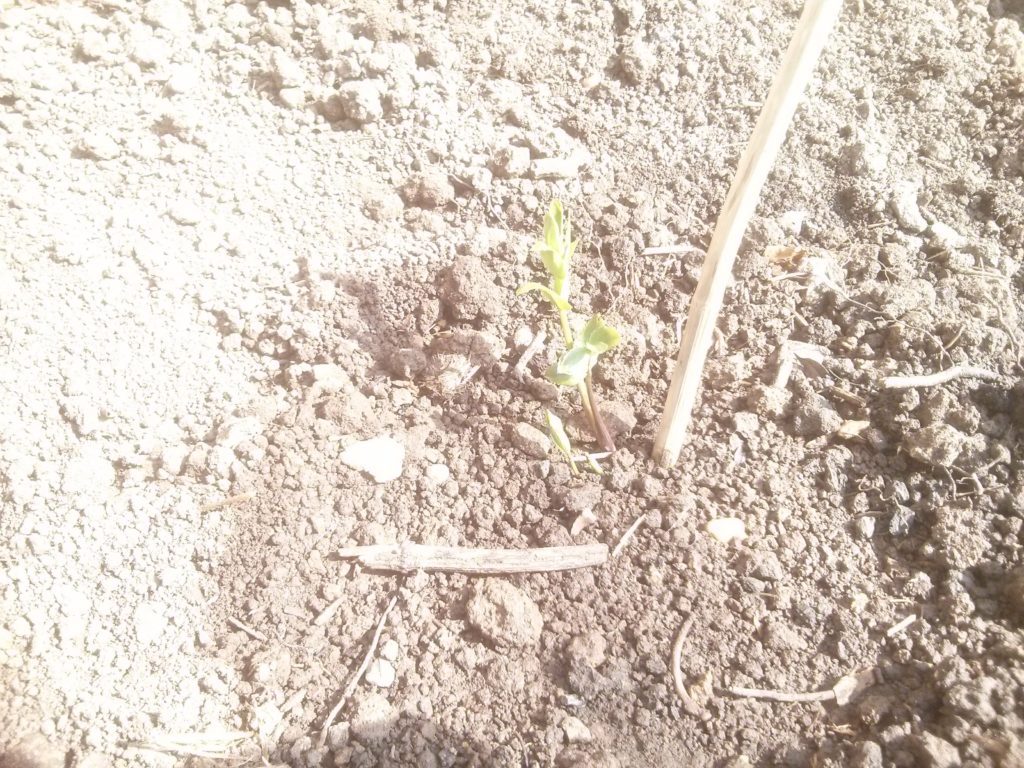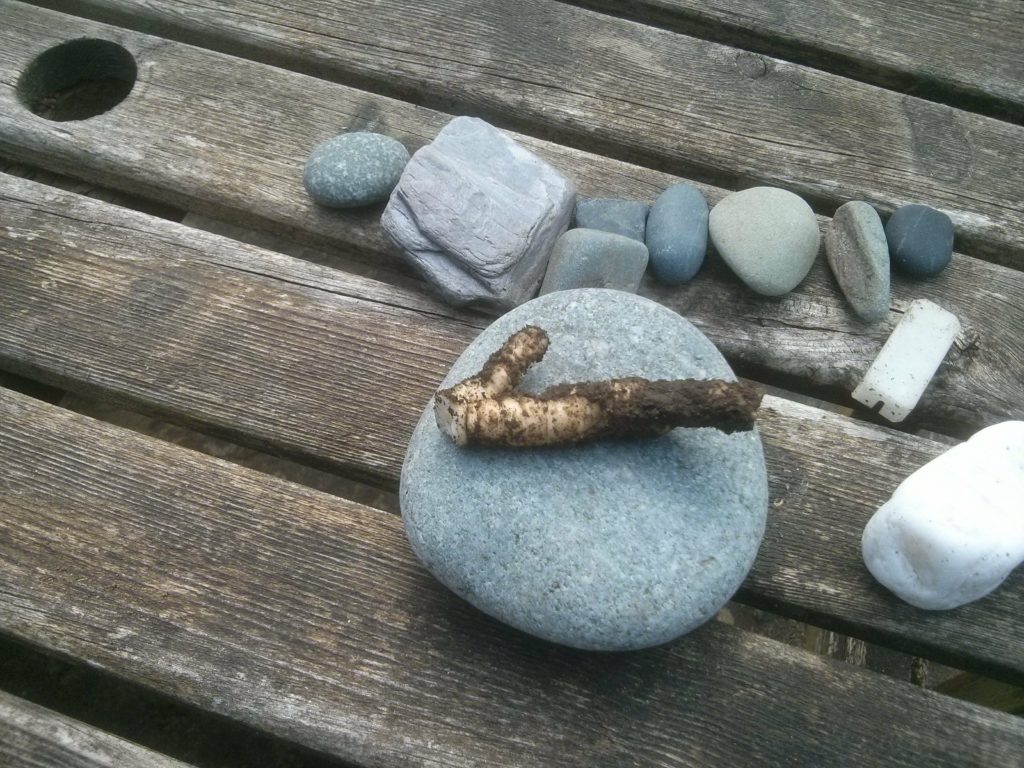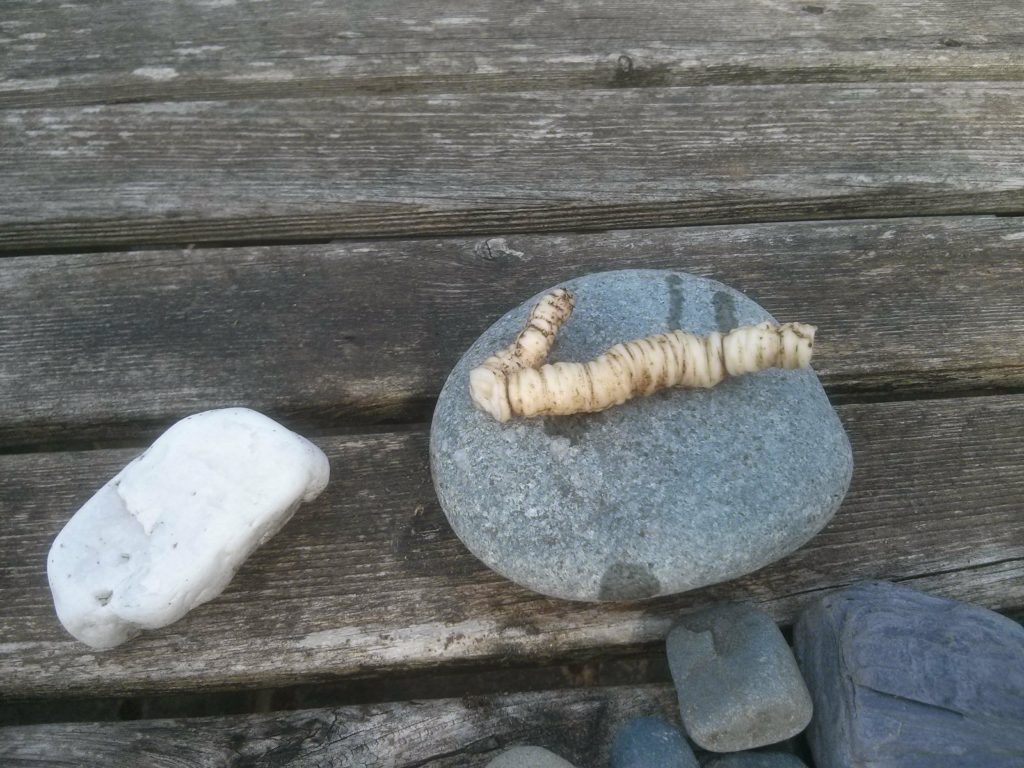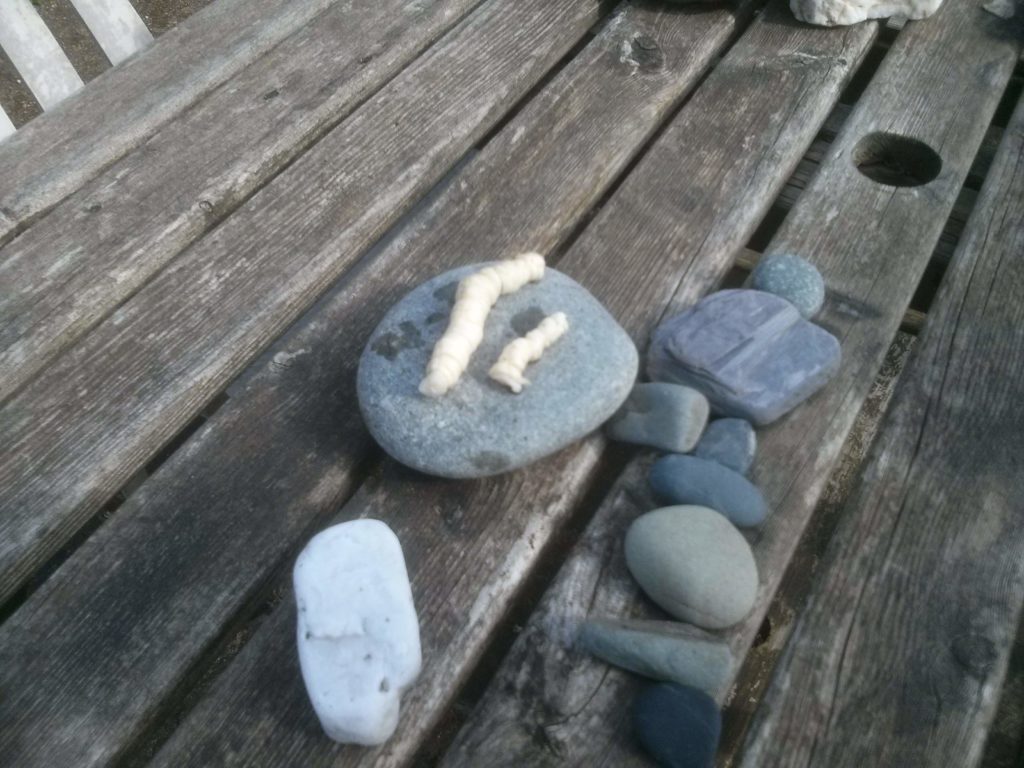Did I mention that over the winter, all four doors to the outbuilding rooms swelled in the unprecedented damp and wouldn’t open for six months? And that after the rain finally stopped, in mid March, brother Alf kept trying the doors and seeing how they were beginning to shift in their frames. Finally the left-most door opened (which meant Al could get into the storeroom and get hold of his good drill at last!)…then the next left…then the third door…but the last door to the planned scullery remained firmly sealed shut. Woes! Brother Alf optimistically foretold that it would open at Easter, as a miracle. Good Friday…Easter Sunday…went past. But on Easter Monday the door opened, and Al has been able to get to work fitting out the scullery.
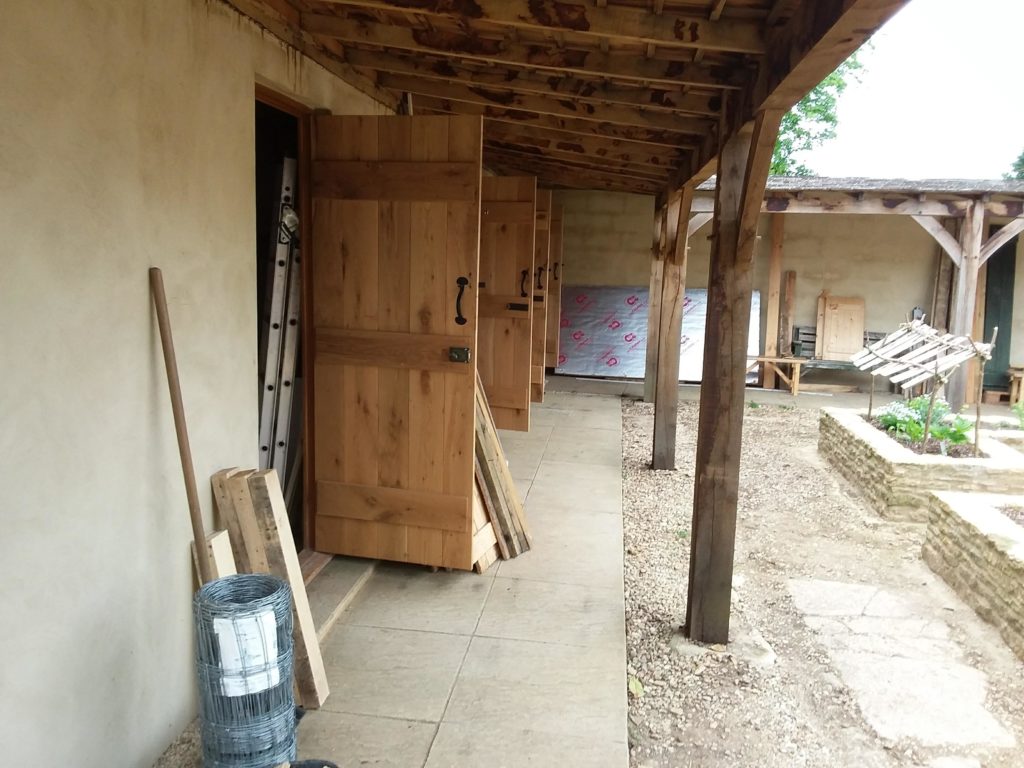
About a kilometre from Rumwoldstow, my nose alerted me to a fine cluster of wild garlic by the brook. I only hope mine will do as well in the garden. I’m a bit worried about it getting too hot – the sunhat doesn’t entirely protect it.
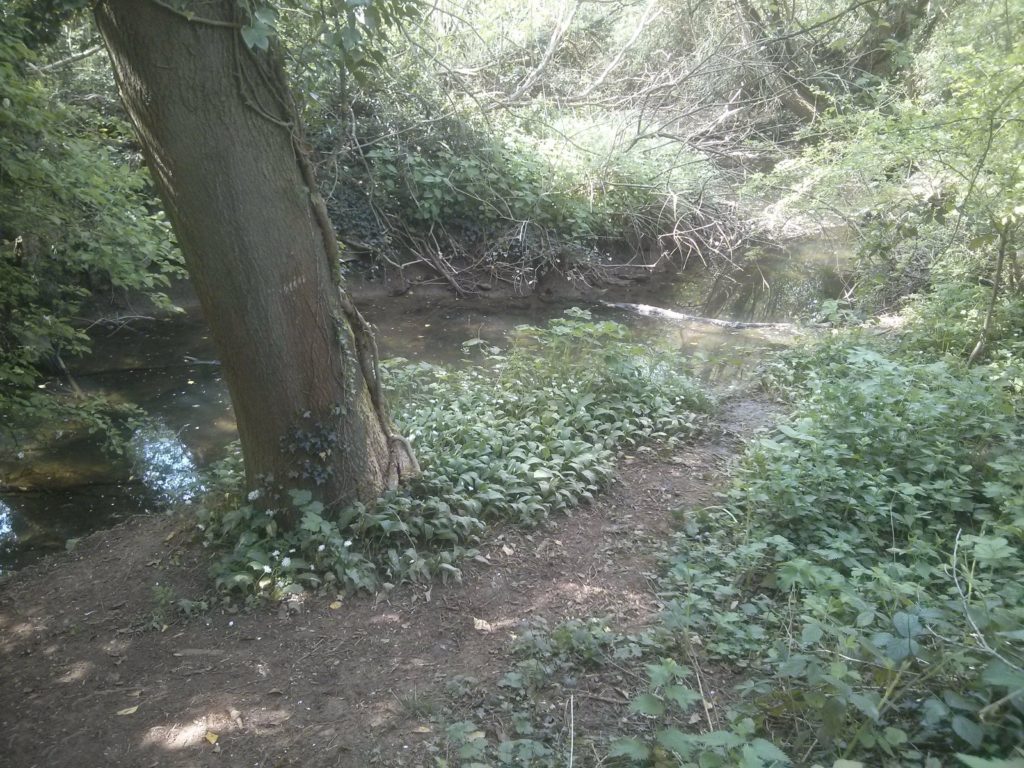
I planted eight pots of skirret seeds that I collected last year, and four pots have germinated well. When they’re a bit bigger, I plan to very gently try and separate the strongest and move them into the pots of failure. Only the strongest skirrets can make it in Rumwoldstow!
A kind neighbour gave me some dwarf french bean plants. The Anglo-Saxons ate various kinds of beans, I don’t know how similar they were to anything we’d recognise but at least it is beans. In return I gave her a spare garlic bulb from those I planted the previous day, mostly around the rose in the monastery garden as I’ve been told this will help keep off greenfly.
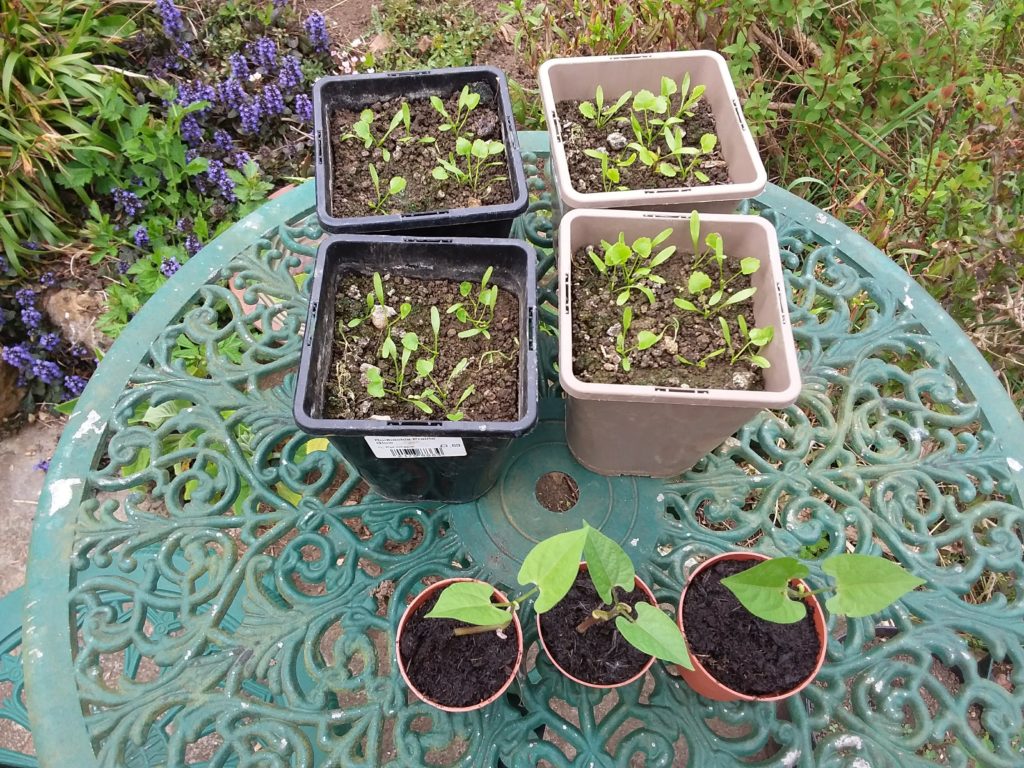
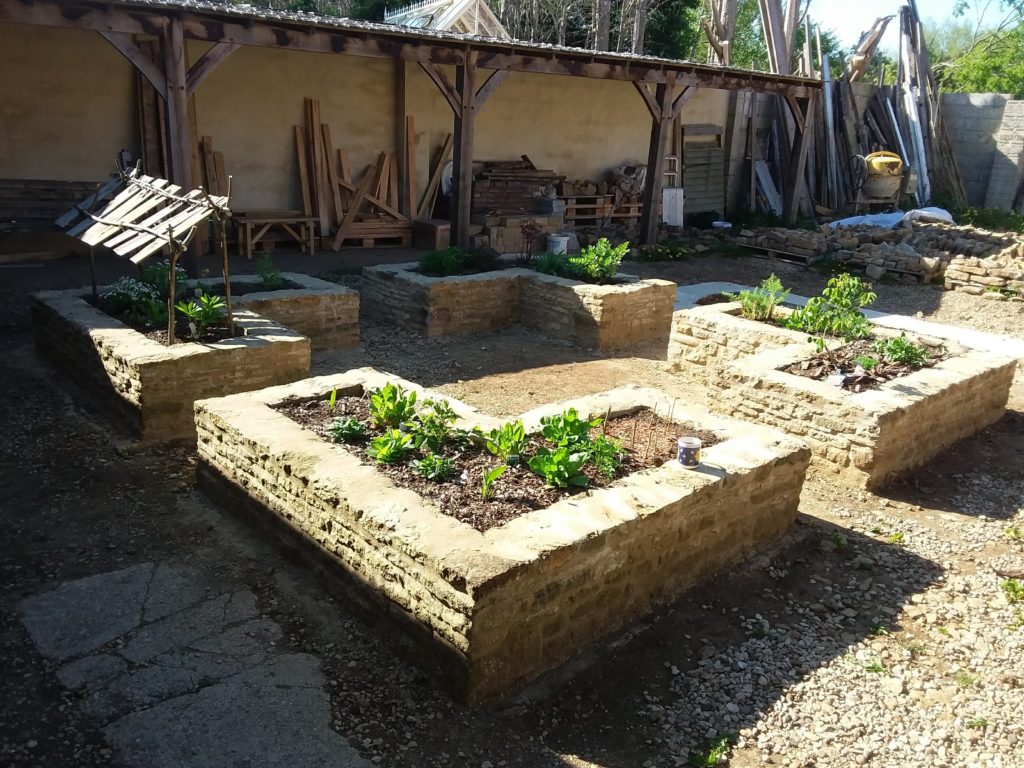
The garden’s filled out a bit but there is still no sign of the three madonna lilies which I planted in the bare area behind the mug. I am so far resisting the temptation to excavate and see if they’re sprouting at all…but it’s hard! What there is, is lots of bindweed shoots. Some are growing from bits of root we didn’t manage to sieve out when filling the beds, and some is in the plants like the fennel that I transplanted. I’m pulling out each sprout as I see it, and hope that eventually they’ll give up.
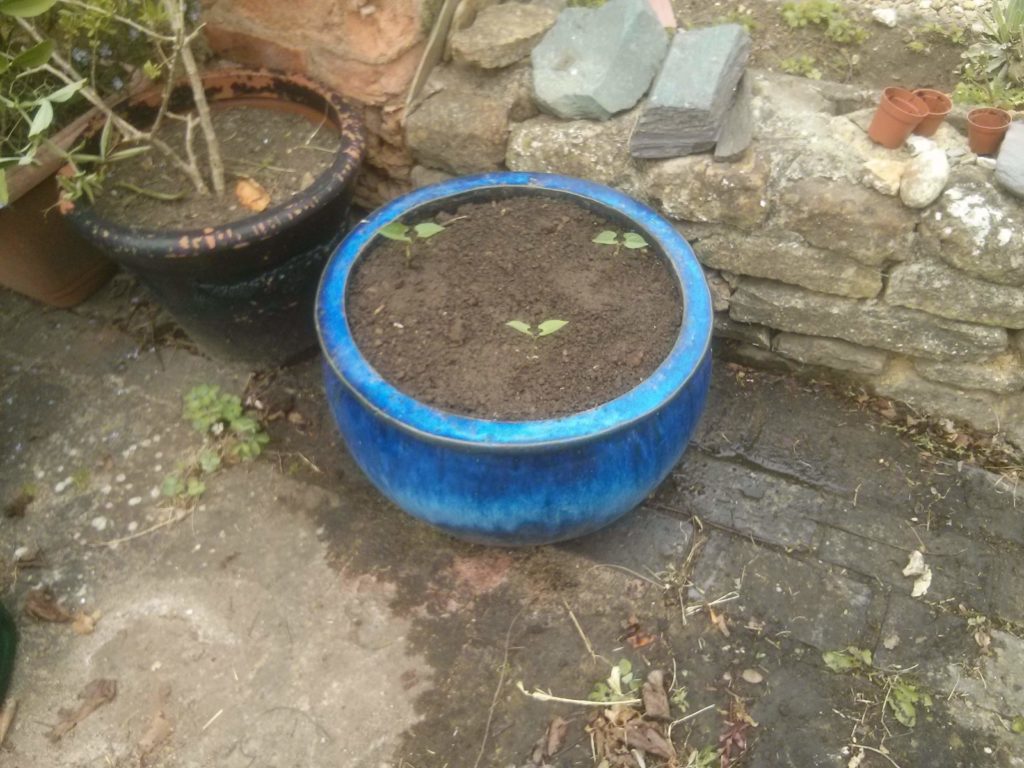
I just had to check on the sheep…yep, still there!
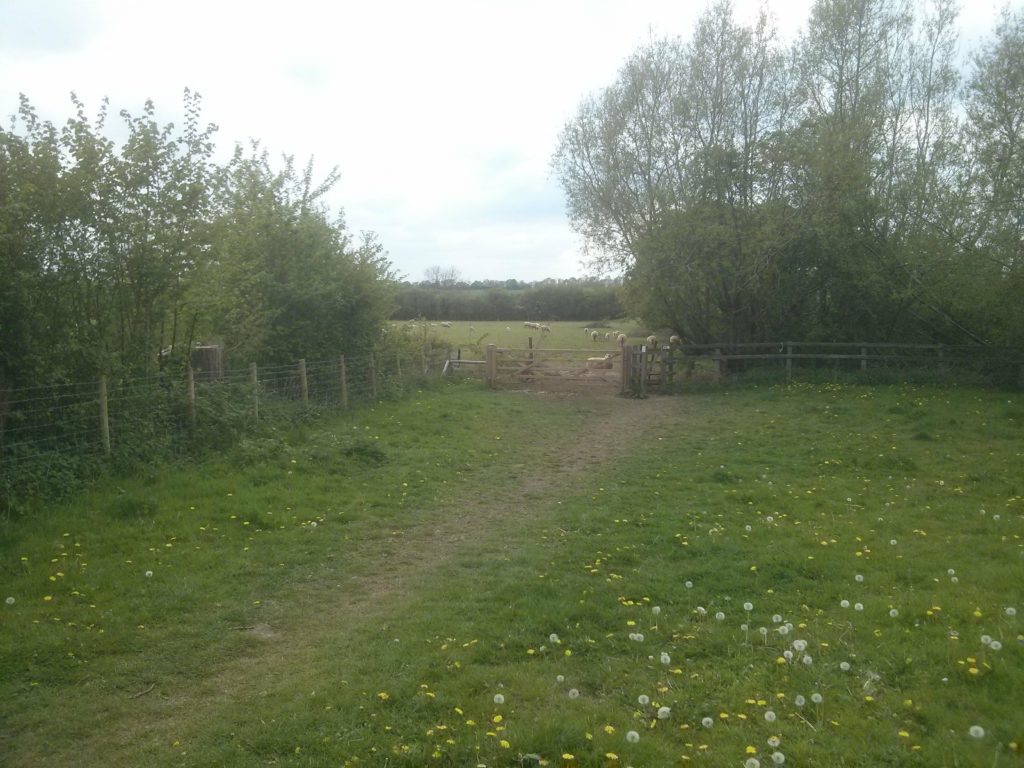
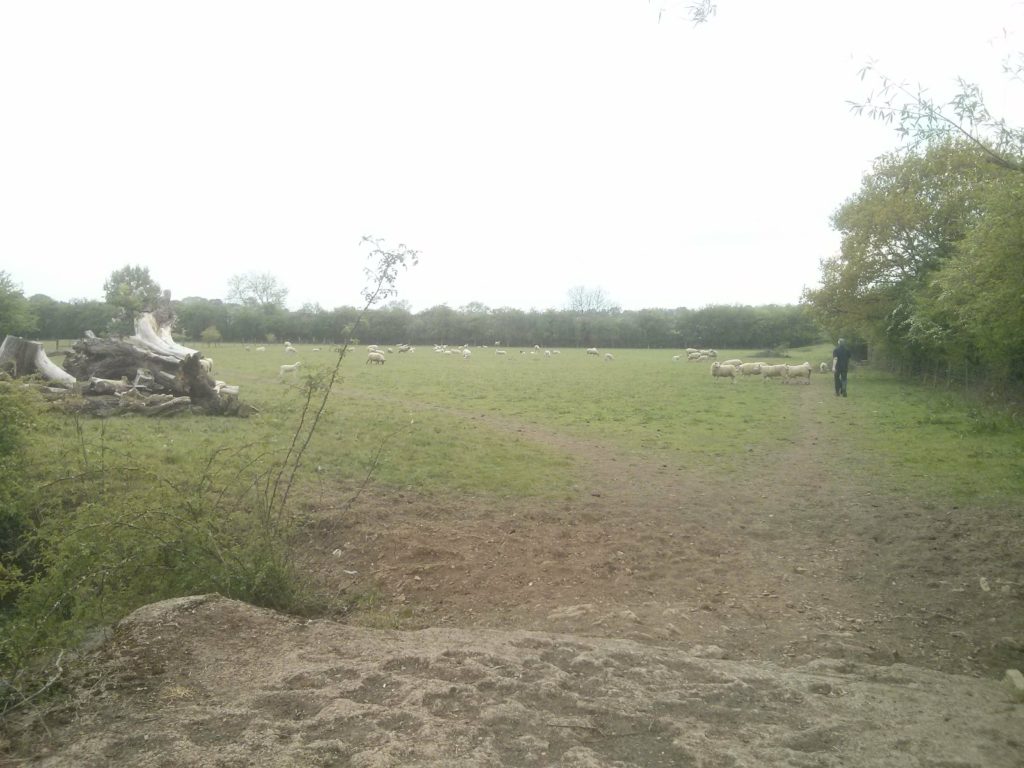
Back in the orchard the dandelions are turning into clocks. But people won’t have called them clocks back in Anglo-Saxon times! I wonder what they did call them? The quince is in full flower and just starting to look as though it may be setting fruit.
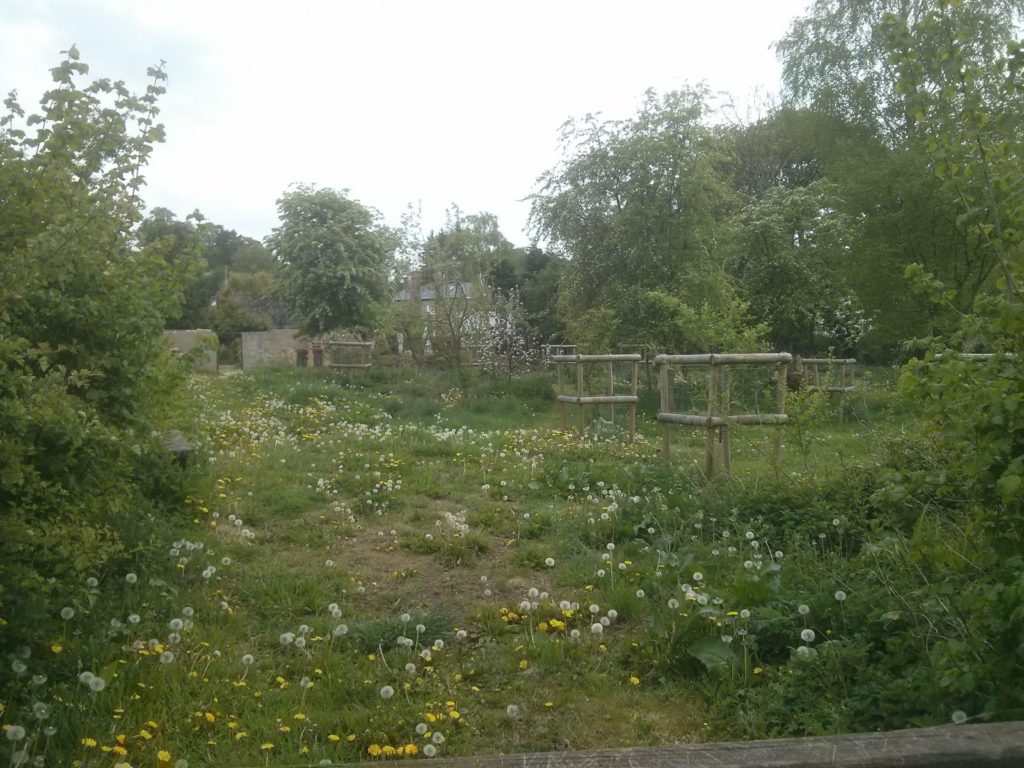
I dug out some of the dock and nettles to give the comfrey which I transplanted into the orchard a bit more light and space. It’s looking pretty healthy, and I hope that once it’s established it’ll be able to hold its own.
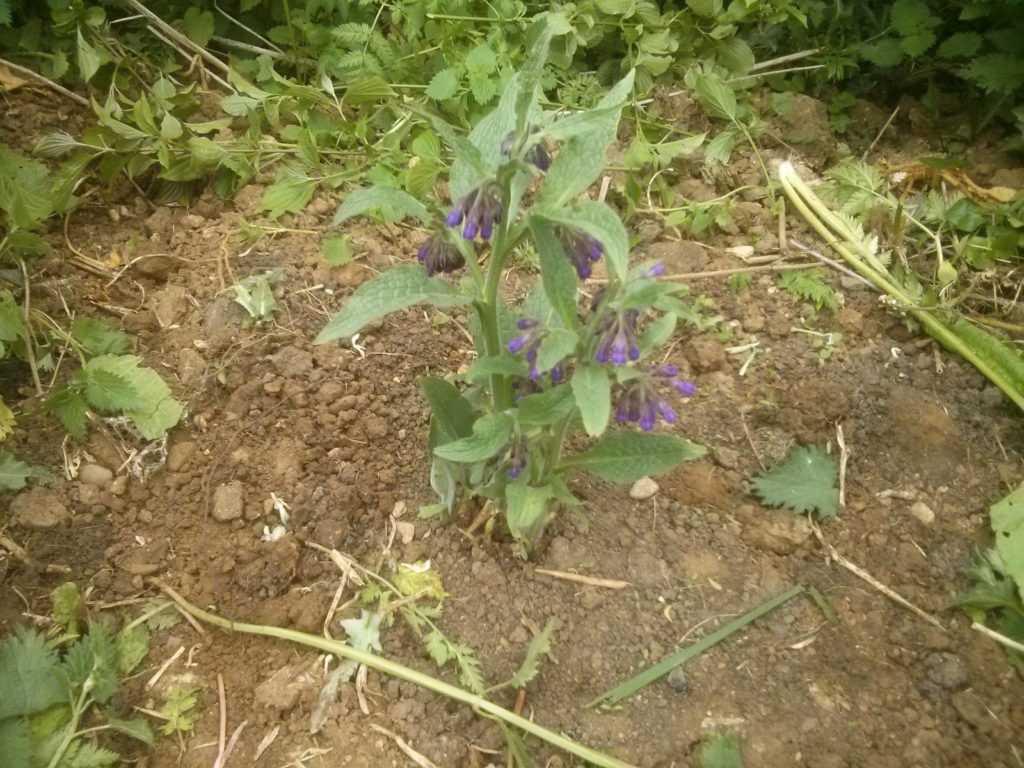
Finally I took about a metre off one of the young damson trees, the one which is reaching for the sky. It still looks pretty tall. I used the very fine lopper on a stick which you operate by pulling a string. I’ll probably take a bit more off next year as I want all the fruit trees to stay fairly low so we can pick the fruit.
